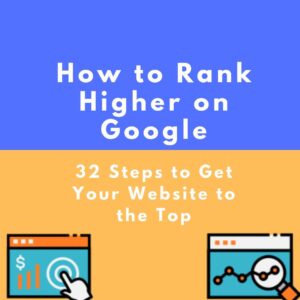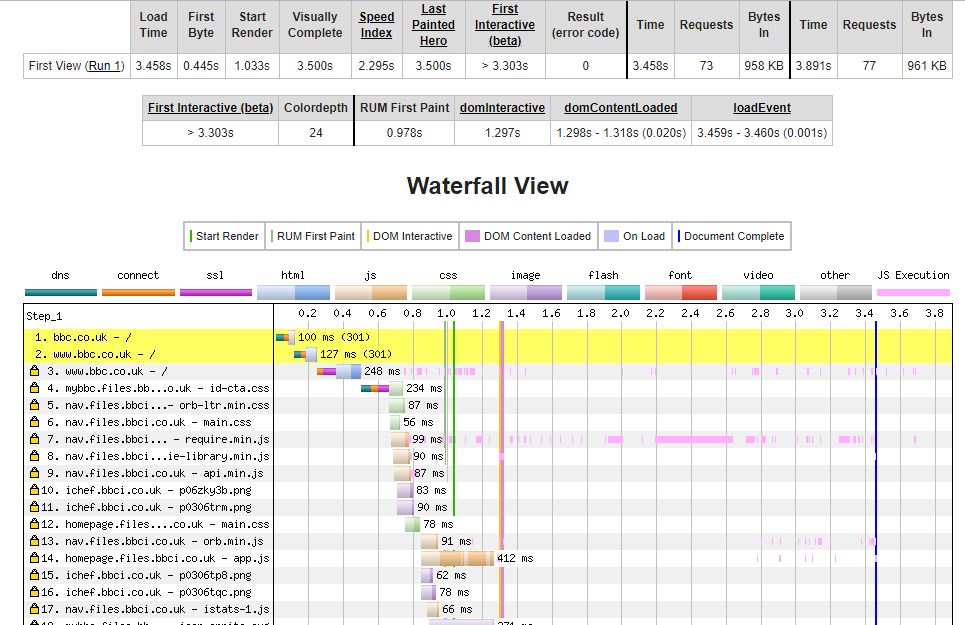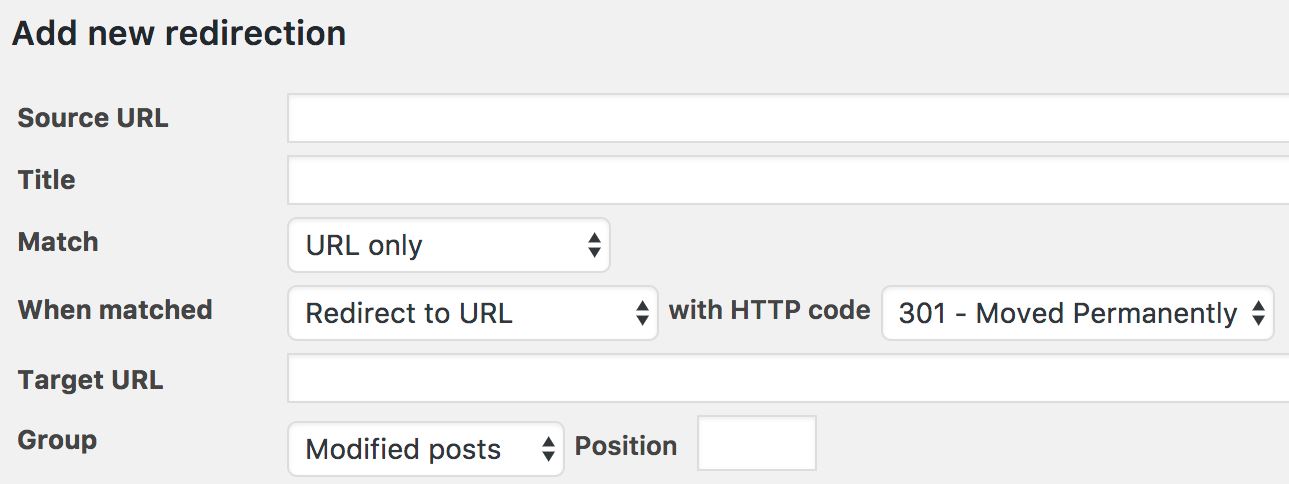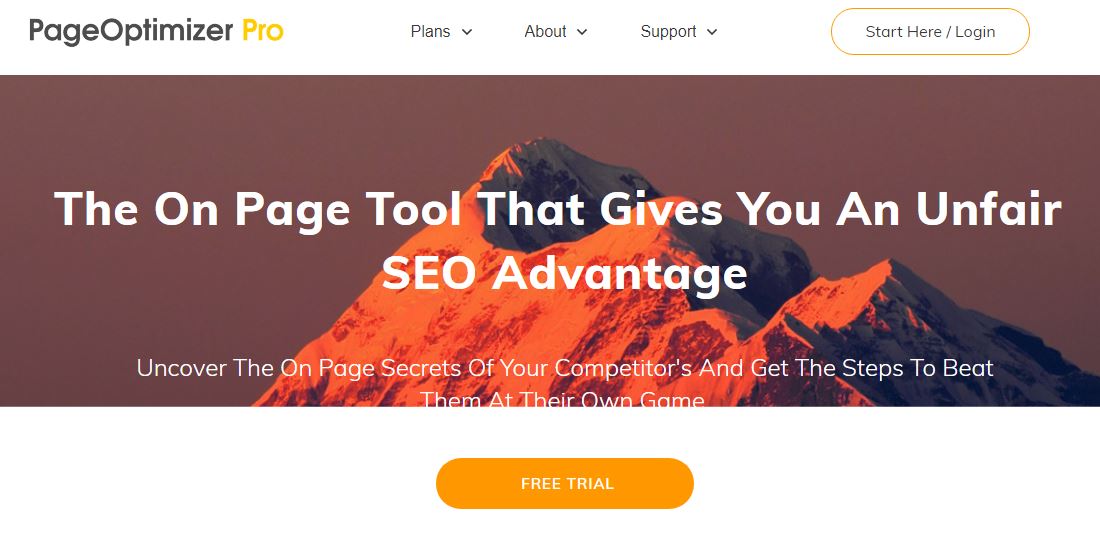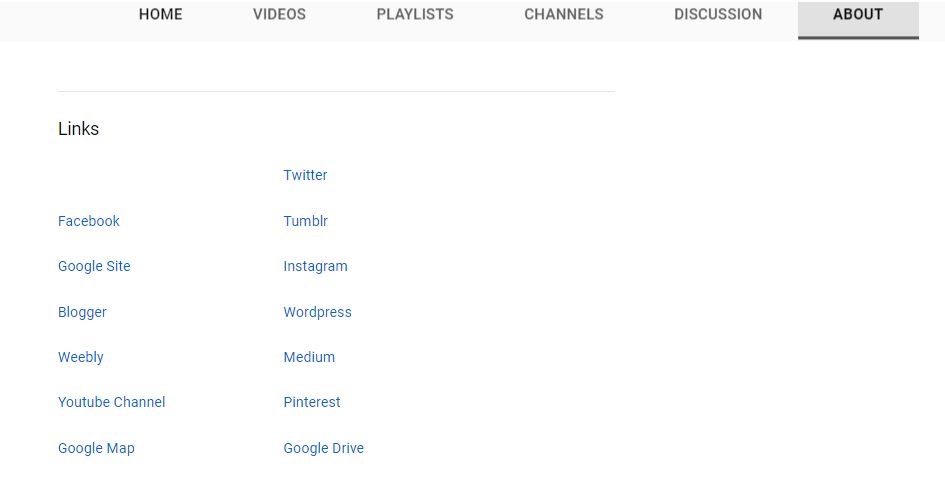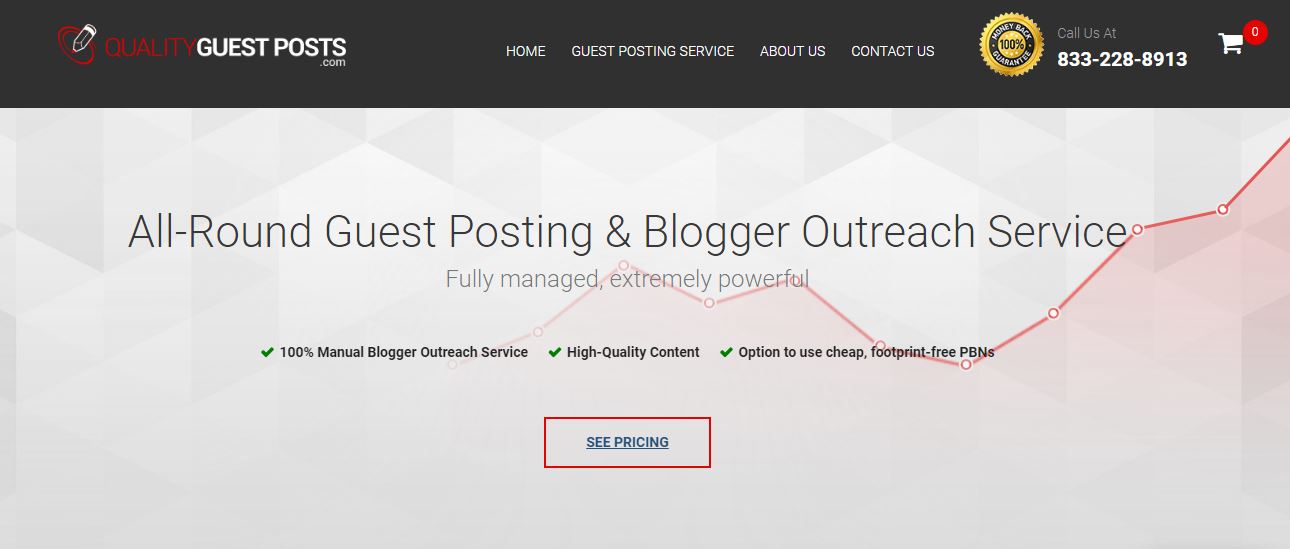How to Rank Higher on Google. 32 Steps to Get Your Website to the Top of Google
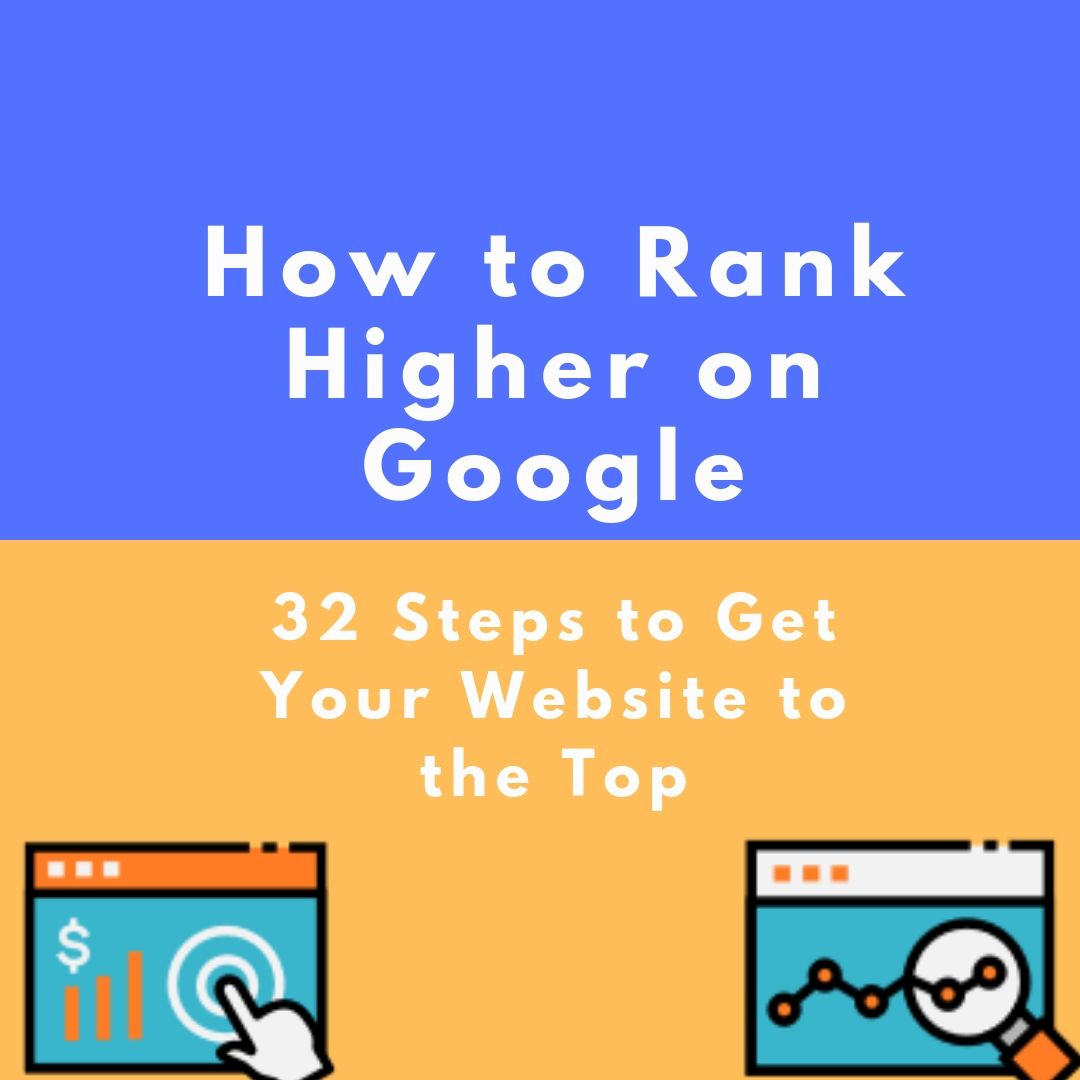

By Matt Henry
One of the most common questions we find website owners have is
How can I improve my SEO ranking and get my website to the top of Google?
As they say, there are many ways to skin a cat, and SEO is a complex subject, Google says there are over 200 ranking factors.
Some of you may be on a budget and are looking to roll up your sleeves, and are happy spending the time learning and building your website or start your own a blog.
How To Increase Your Ranking For Free On Google
So we will start off with the easiest and quickest wins that you can get because the quicker you can get to positive results the better.
These will be free and just require a little bit of work to do.
It means you will stick with it and that website could potentially be a life-changing asset for you, your business and your family.
Further down the guide will be more tricky or longer-term SEO strategies.
Some of these will require investment because getting your website to the top of Google means you will be up against competitors who have invested in their website.
What really makes the investment pay off is all the steps before it has been done, because it will make the strategies work even better.
There are a lot of other great guides on how to rank higher on Google, but in our opinion, they throw everything at you but in no particular order.
So it is easy to get lost and confused about what to do first.
The main assumption of this guide is that you want to learn how to do search engine optimisation yourself for your website. Also that you have a small to medium budget to invest with as you move through this step by step guide.
This is a step by step roadmap to get you moving in the right direction in the search results.
Don’t skip steps as this will an efficient roadmap to increase your rankings in Google. If you have already done the step then move on to the next section.
Follow this step by step SEO guide as we show you how to improve your Google ranking with your WordPress website in 32 steps.
To give you a general philosophy to keep in mind when going through this process.
The philosophy to rank higher on Google is trust and authority.
This means every step that you do will help build your trust and authority in Google’s eyes.
The higher these two aspects of your website is the higher you will rank your website in the search engines.
The reason for this is because Google’s mission is to answer each search query as fast as possible and send people to the best website with the best answer.
This is why we start with the fundamentals first because if you have a slow loading website for example, then it will be bad user experience. So in this example, Google would rather rank a faster loading website.
Once you have fixed your foundations and done all the fundamental steps in this guide, your website will rank higher in the search engines and hopefully eventually reach the top.
1. Set up Google My Business
It sounds illogical right to do this first but think about it – if you are a real business you should be on Google My Business (GMB).
Simply go to rank higher on Google website and sign up.
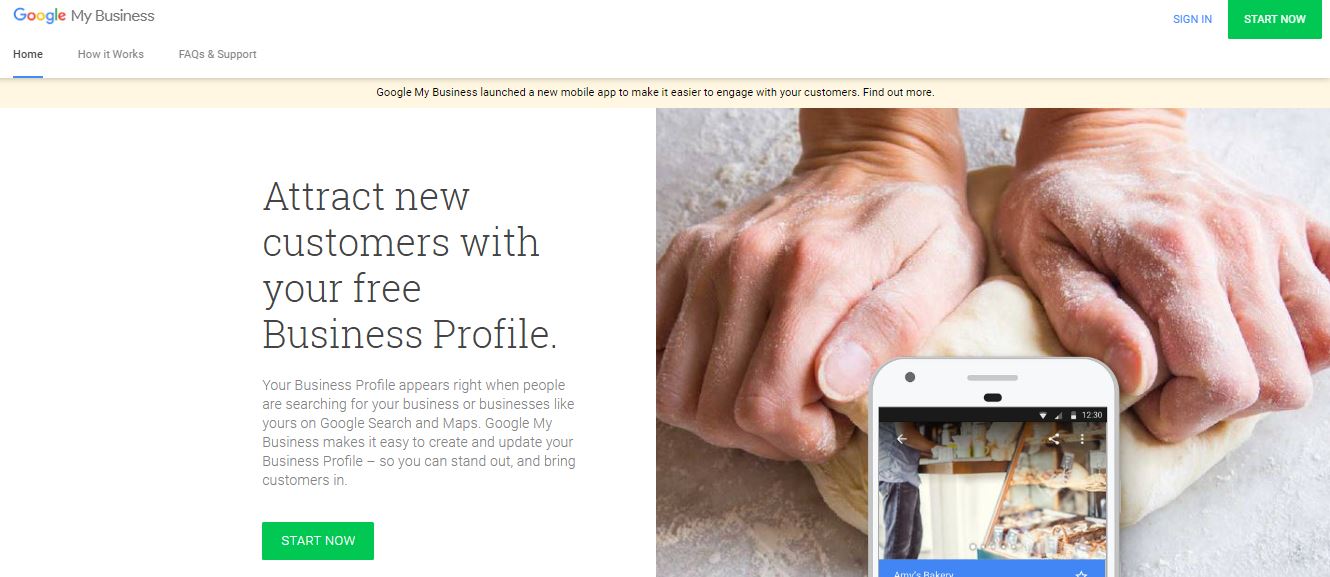
You will want to verify your listing which you can do by entering your details and asking Google to send you a postcard with a verification number on.
It should take about a week to come.
The benefits of this are it will help you rank a little higher because Google knows you are a real business with a real address.
This is mainly for local businesses, so if you are not a local business simply skip the steps where it is for local businesses who are looking to show up in Google Maps search results.
Google will trust you more.
There are a few important things you need to do when you sign up for Google My Business (GMB).
- Fill out all your details completely, this includes description, opening hours, services, area served and everything else that you can possibly fill out.
- Get as many images as you can, you want images for all the sections including inside the business, outside the business, staff members, products, etc.
- If you are a local business then before you upload your images to Google My Business you will want to Geotag your images with an Image Geotagger this helps with ranking in the Google Maps.
- If you have any videos you will want to upload your videos
These are things that a lot of websites don’t do with their GMB listing.
So if you are doing them, then Google will like you more and trust you more so you will get a boost in search and in Google Maps.
The next step is to get a GMB website, it is free and you can find it within the GMB dashboard.
It is simple and easy to create and you can get it up and running in 10 minutes.
It uses a lot of the information you have already put into your Google My Business listing which is why it is quick to get set up.
This is mainly for businesses but it won’t harm doing it because Google likes it when you use their services.
Get your Google My Business Website here.
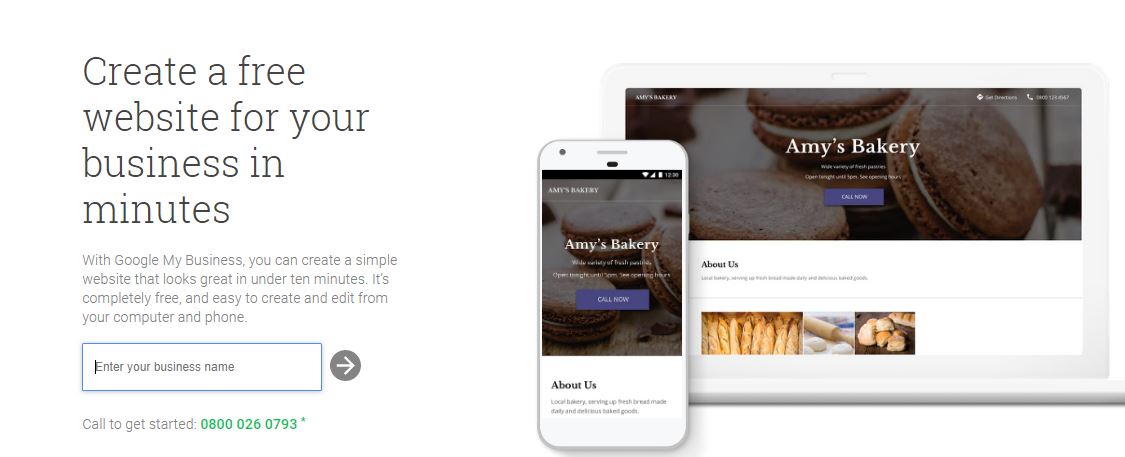
The next step is to make some posts which you can do inside Google My Business. This is great for businesses because these posts show up when people view your map listing. But also because you can get your keywords in the posts which help you rank in Google Maps better.
The final step is to get reviews. This is an ongoing step that you should be doing in the background as you go along. This step is mainly for businesses because getting more reviews is one factor that helps you rank higher in Google Maps.
You will want to get reviews from previous customers by sending them an email or making a phone call. If you can’t do that then get employees to leave a review or friends and family.
Just get 10 or so reviews for your business and you will be on your way.
One tip is to ask your customers to describe what product or service they have had from you and whether they liked the service.
This will get some of your keywords in the review which again will help you rank higher on Google.
2. Google Analytics
Google Analytics is a great free tool from Google that shows you data about your website.
You will be able to see the number of visitors to your website, where they have come from and what they did when they got to your site and much more.
When you look at the reports they all give you interesting information about the people visiting your website.
It helps you to measure your progress and spot ways to improve your performance.
It is an essential part of your digital marketing strategy.
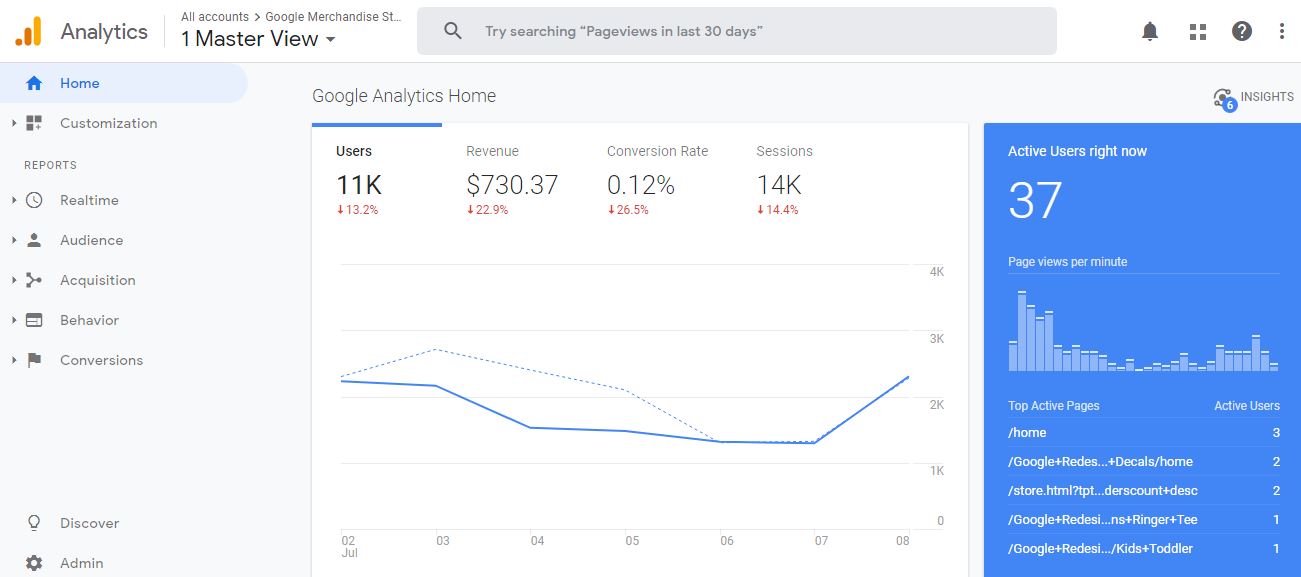
You can see the demographics of the people visiting your website, their age, gender and where they are located. This can give you a better idea on how to market your business better to these demographics.
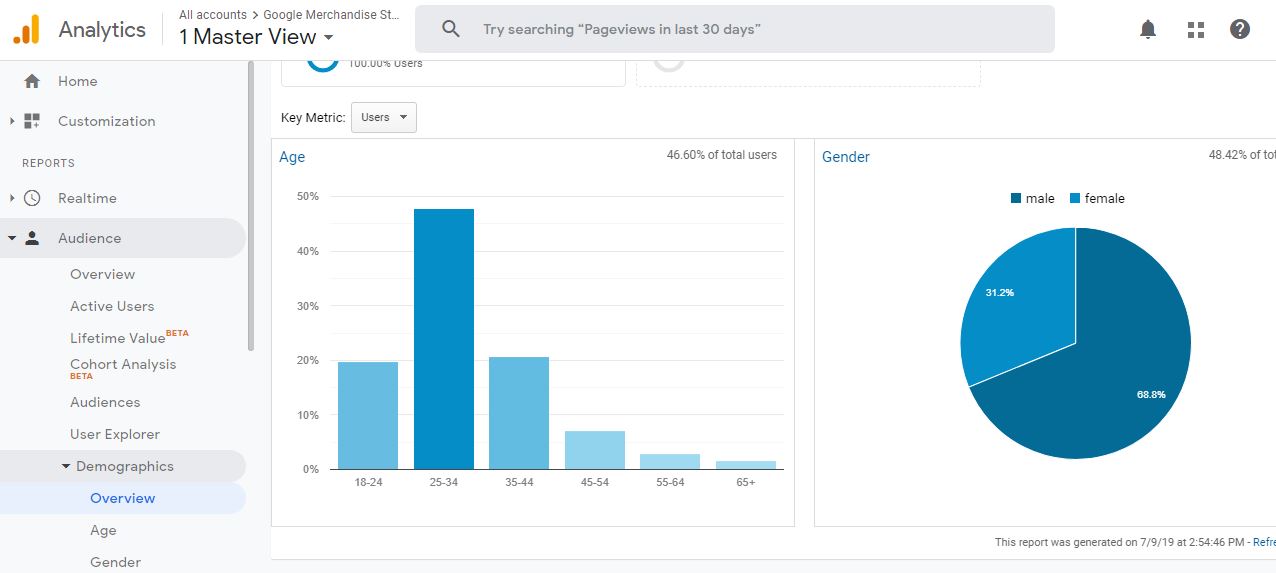
You can set goals like ‘user fills out contact form’ or ‘user adds to cart’. This will help give you a good idea of how well your website is converting.
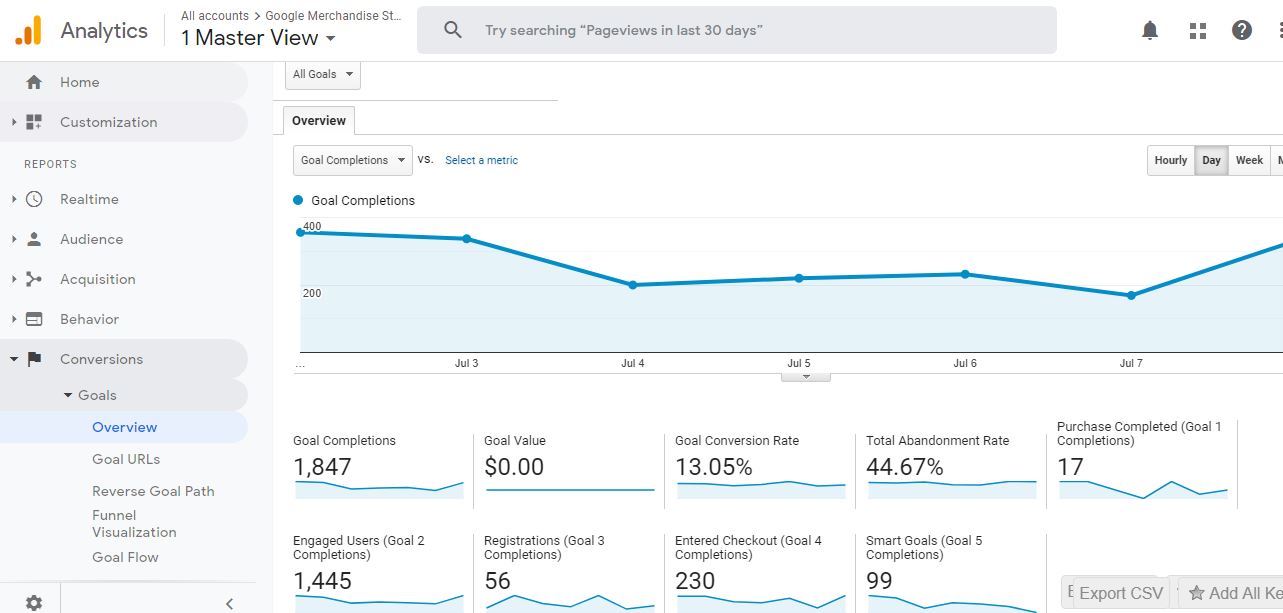
You can see what channels your traffic is coming from whether that is organic search, direct, paid or referral. This is useful because you see what traffic sources are working best for your website, and perhaps spot opportunities to increase your traffic to your website.
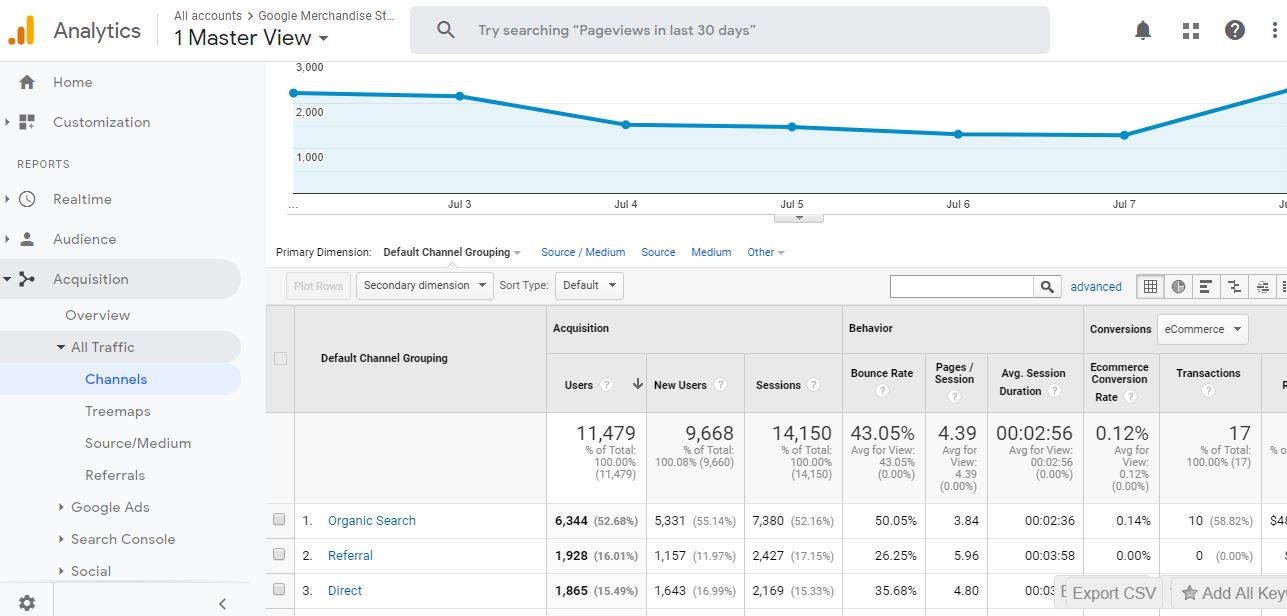
The users flow is interesting because you can see how people use your website, you can see what pages they go to and what journey they have.
It is a good idea to also use Hotjar or Smartlook to record your visitors so you can see exactly what they are doing.
But the user’s flow gives you a 20,000ft view which is a nice foundation to start from when analysing what people do on your website.
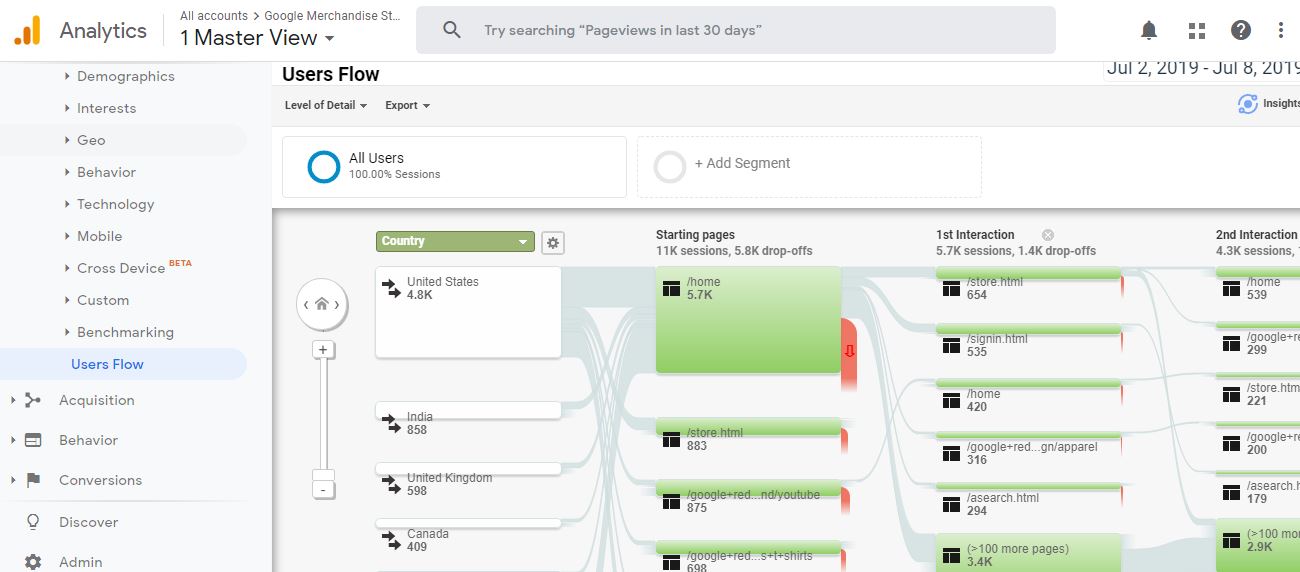
The first step is to create a Google Analytics account.
The signup button will take you to the new account page, simply fill out all your details and select your industry category.
The next step is important because Google will give you a piece of code which is your Tracking ID.
This code needs to go on every page of your website.
When you install Google Tag Manager you will be able to put the code into Google Tag Manager which is the easiest way to do it.
You need to copy and paste the Tracking ID code directly into your HTML, immediately before the closing </head> tag.
It sounds scary but it is simple to do in WordPress.
In order to add the Google Tag Manager or Google Analytics code to your website follow these steps.
Step 1
In your WordPress dashboard, select Appearance then Theme Editor.
Step 2
On the Edit Themes page, there is a sidebar menu on the right-hand side. Scroll down until you see Theme Header and select it.
Step 3
Copy and paste the Tracking ID directly into the Theme Header text stylesheet, you put it just above the closing </head> tag. (scroll down to find the </head> tag)
Step 4
If you are adding the Google Tag Manager code you also need to add a tracking code just below the <body> Tag.
Step 5
Save it and then go back to Google Analytics and verify it has been installed correctly.
Step 6
Wait 24 hours and you should start seeing data in your Google Analytics.

3. Set Up Google Search Console
Google Search Console is another great free tool from Google to help you monitor and improve your website.
It shows you valuable data on where you rank in the search results, how many impressions you are getting and how many clicks – you can find this in the performance tab.
On top of that, it shows you other important things like whether you have any errors, page speed, sitemap installation, what websites link to your website and your mobile usability.

So it is important to set it up straight away.
Simply go to the Google Search Console website and log in with your Google Analytics login details.
Step 1
Click on ‘Add a Property’ at the top of the page
Step 2
Enter the URL of your website in the URL Prefix box on the right side
(remember the https:// and the http:// version are different in Google’s eyes so make sure you enter the right one)
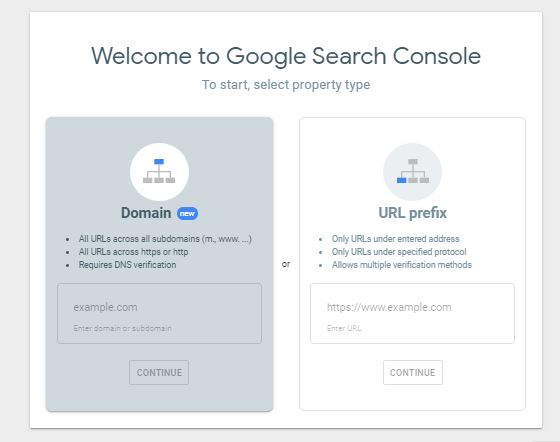
Step 3
Verify your website
There are 4 options to choose from
- Using your Google Analytics account login after you have added the HTML code to the header of your theme file like explained in the Google Analytics section.
- Add the HTML tag code to your theme header in your WordPress Theme Editor before the </head> in the Theme Header section.
- Use your Google Tag Manager account which is a plugin you can install on your WordPress theme and you can find it by going to Add Plugins.
- Add the DNS code to your Domain Name Provider DNS Configuration. The other 3 options are a lot simpler.
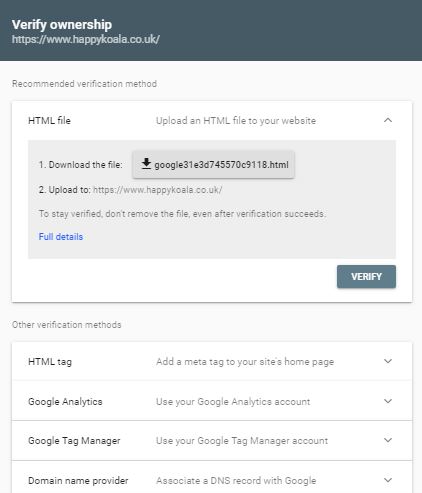 Step 4
Step 4
Create your sitemap, you do this by installing Yoast SEO plugin or All in One SEO plugin which will automatically generate a sitemap for you.
4. Google Tag Manager
Google Tag Manager is a great little free tool from Google that allows you to easily add tags (snippets of code) to your website without having to add any code to your website.
Simply go to Google Tag Manager and sign up.
Then simply click on install Google Tag Manager in the admin menu

and copy the code and place it in the header of your website and the second code in the body like in the image below.

Once they are linked up you can put all your tags into it which includes Google Analytics, Google Ads, Facebook, Crazy Egg, Hotjar, Twitter and many more.
This makes it very easy to quickly add connections to all the main websites that you need to be connected to.
To add a new tag simply go to ‘add new tag’, select your tag type and on what pages the tag will trigger on.
The tags allow these websites to record user data so you can use it to see what people do on your website, what demographics, and to be able to target them with ads.
5. Technical Audit
This is the first place to start when it comes to diagnosing a website.
You want to look at the on-page optimisation and the off page.
First off you want to download Screaming Frog.
Then enter your website and see all the different issues it finds.
The main ones to look out for are
- Page Titles (there should only be 1 H1 page title on each page)
- Page Meta Descriptions (Meta descriptions are what shows up in the search results and should be fully filled out on each page)
- Image File Size (images should be less than 100kb’s and preferably less than 50kb’s)
- Image ALT tags (ALT tags are a description of the image as if you were explaining it to a blind person)
- 404 error on pages (any 404 errors you will want to use a redirect WordPress tool to point them to a working page)
- Check if you have your keywords in your H2, H3, H4 and H5 titles
Fixing these things alone will help boost your rankings in Google because most people get these wrong or just leave them unfixed.
Google will appreciate that you fix yours and will reward you accordingly.
Once you have done this you will want to check your page load time with GT Metrix or Web Page Test.
Take a look at the waterfall to see what parts of your page are slowing it down.
Very often times this is images, slow server response time, too much JavaScript or CSS files.
Then make sure you install some good speed improvement plugins like W3 Total Cache, Auto Optimise or WP Rocket.
Next, you want to look at off page optimisation, you can do that with either Ahrefs, SEMrush or Moz.
These tools will tell you how strong your website is, including how many backlinks it has going to it.
Backlinks are a key indicator of how well a website ranks because they are like votes of confidence from other websites.
So you will want to take a look at what backlinks you have and what your competitors have, then plan accordingly.
In the tools, you will also be able to see your anchor text ratio which is important because you don’t want this to be over optimised.
(anchor text is the text that links to your website from another website)
Ideally, the most used anchor text is normal kind of things like
- Your business/brand name
- Your website address (both www.website.com and https://www.website.com
- Generic terms like click here and visit website
You don’t want to have too much of the exact match keyword anchor text.
Exact match keyword anchor text is the keywords that are the most valuable and that everyone is trying to rank their page for.
However you do still want it, so when you do things like Guest Posts and Sponsored Posts – you will be able to get your keywords in the anchor text.
But at this stage of doing the technical audit, you just want to take note of what your anchor text is, so you can send the right types of links later on.
Bonus tip: You can also conduct a technical audit using the Website SEO Checker tool by Sitechecker
6. Page Speed
Page speed is important and it is one of the things Google takes into consideration when ranking pages.
The reason is simple – it’s because page speed affects user experience, and every extra second a website takes to load the more people get frustrated and bounce back to the Google search results.
Also if someone is using their mobile on a 4G connection, then they may stop browsing your website because it loads too slow.
To check your pagespeed you can use the tools GT Metrix and Web Page Test.
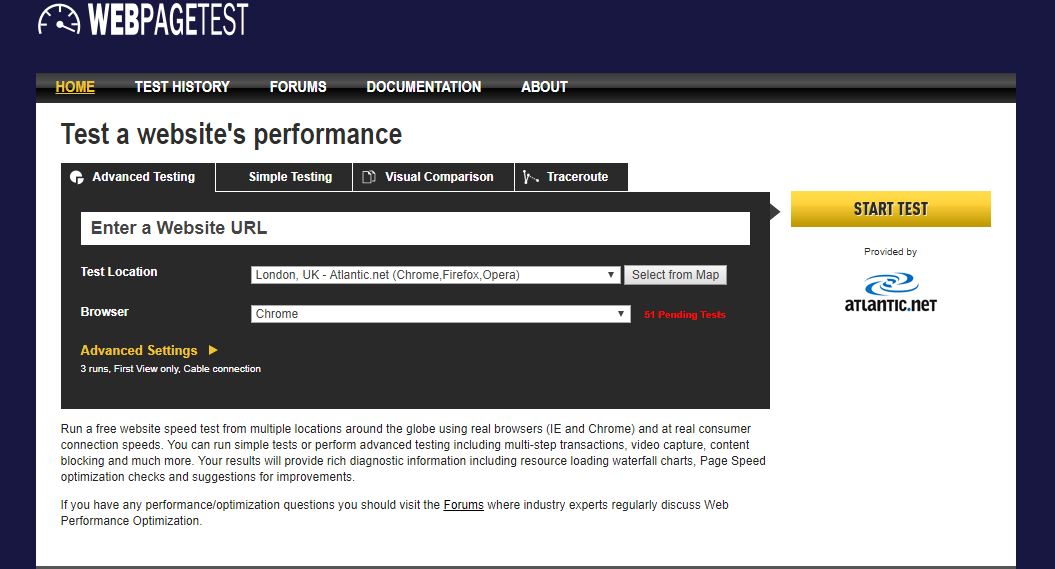
They both give you stats on your page load time, and both give you a waterfall diagram showing exactly what loads when and how long each element takes to load.
So you can quickly see if for example, you have a plugin that is taking too long to load or an image that is oversized, or simply that it takes too long for your host to send your page.
There are many technical things that you can do to increase your page speed.
Mainly it comes down to getting a good cache plugin like W3 Total Cache, Auto Optimise or WP Rocket.
Then go to the options menu and tick the boxes for
- Minify JS
- Minify CSS
- Enable Gzip Compression
- Leverage Browser Caching
This will all help to speed up your website and make it more search engine friendly.
If you don’t want to do it yourself than you should hire someone to do it for you.
We recommend Cerontek’s Premium WordPress Speedup Gig.
7. Optimise Images
Images are one of the top things that people don’t do well on their website.
Most images on websites are
- Too big in terms of file size
- Too big in terms of the length and width of the image
- Has no ALT tags
- Poor Quality or is a Stock Image
You want to make sure that you reduce the file size of your images to the smallest possible size without losing quality that you can.
This is because images are one of the biggest causes of a slow loading website.
So by reducing the size of your images, you reduce the page load speed.
Think of the person at the bus stop who is on a 4G connection on their mobile phone.
Your 10mb images just used up all their data.
We use this online image optimiser to help reduce the file size of images.
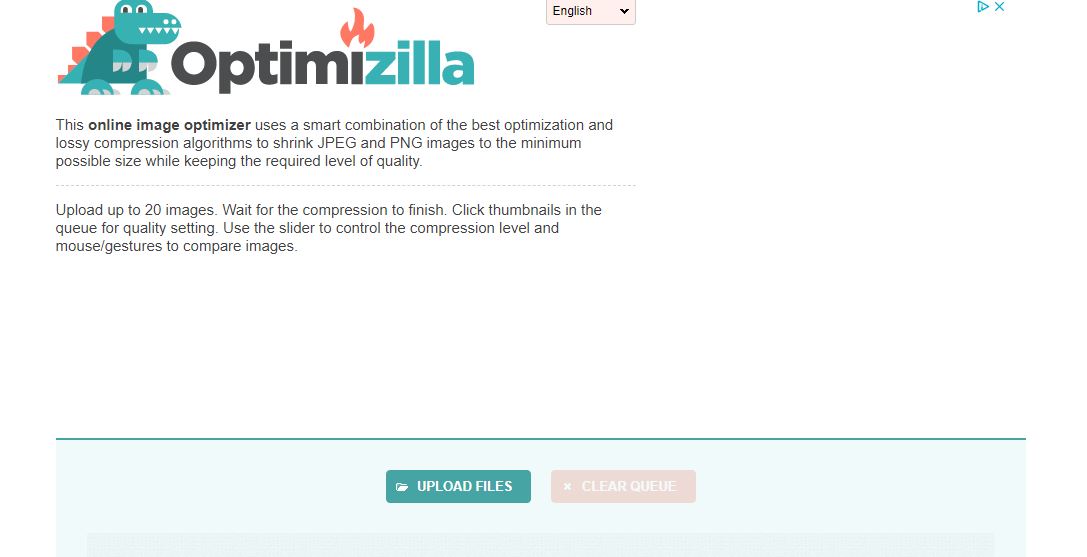
You also want to have the images the right size in terms of dimensions.
If the image is 600×400 pixels on the website then you don’t need an image that is 1200×800 pixels.
You should shrink it to the right size, this will save more image size which is great.
We use this image resizer to change the length and width of images.
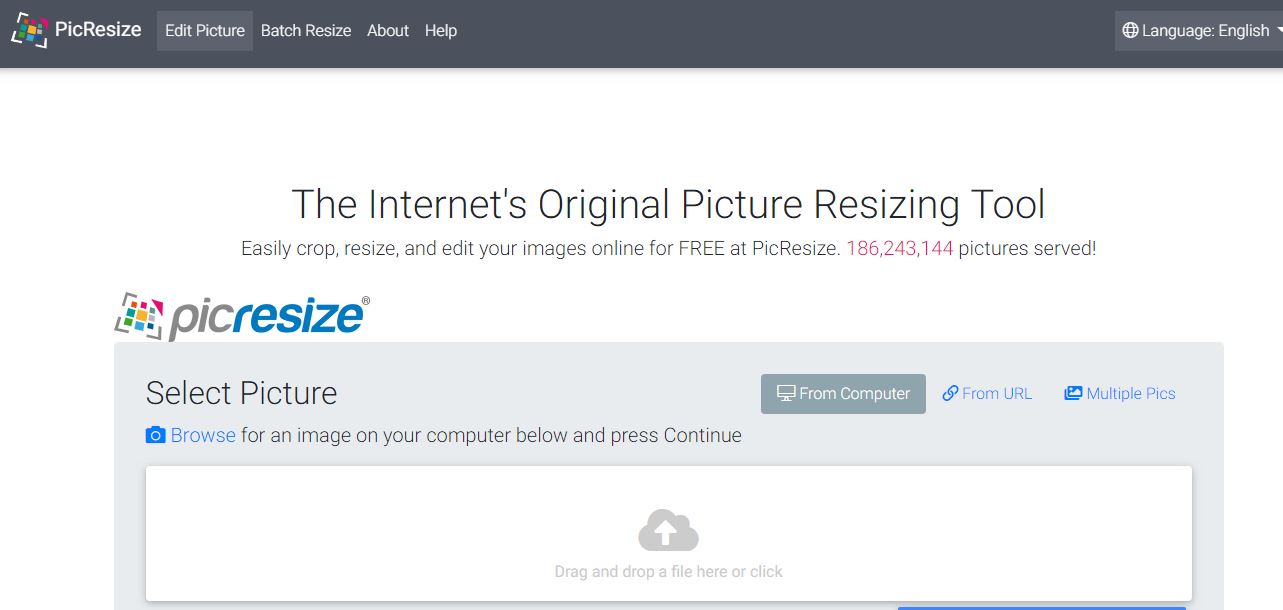
You also want to make sure you have ALT Tags on each image.
ALT Tags is simply a brief description of the image as if you were talking to a blind person – because that is what the ALT tags are for.
Naturally, this will get your keywords in which is good to help with SEO, but don’t abuse it or try and force your keywords in.
Lastly, you should get unique images that are good quality and you want to stay away from stock images.
The reason for this is because Google likes original content, and also from a user perspective – people can tell when an image is real or staged like in a stock image.
Bonus Tip
If you are a local business or a local type website, then you can Geotag your images.
Google will like you for it because it will give it more information that it likes which can sometimes mean a little increase in your rankings around where your images are Geotagged to.
Geotagging is simply adding the longitude and latitude coordinates of your business to your images.
So if you have a place where people can visit then you can Geotag your images to that location.
If you are a service business for example, then you can Geotag the images at the place where you visited your customers.
This helps Google understand the radius of your service area and is great to use for local service businesses.
The tool we use to Geotag images is Geotag Online.
8. Add Images and Videos
Images and videos are an important piece of any webpage because as they say a picture says a thousand words.
You want to break your text up with images and videos as this helps reduce the overload of text.
If you have a “click to enlarge image link” under your images, then it gives people the opportunity to click on your website.
It is best to use high-quality images that are unique to your website rather than stock images.
You can use this lightbox plugin for a nice looking enlarged image popup on your website.
This is a good indicator of interest in Google’s algorithm, so you want to give your users lots of opportunities to interact with your page.
For video, it can be even better because not only does the user click, but by watching the video they are staying longer on the page.
Staying longer on the page is another good indicator of interest Google uses in its algorithm.
On top of all this, you also get an SEO benefit by adding images and videos.
Images, for example, have ALT text which is a great place to add your keywords in a creative way.
Videos are great for SEO too because you can get your keywords in the title of the YouTube video.
Also, Google owns YouTube so they like it when you add a video to your website.
You basically get extra points for having a relevant video, that is unique and has the keywords in the title and description of the video.
Then when it is placed on a page that is all about whatever the video is about – that page gets a boost.
So by having images and videos on your page
- People will stay longer on your website
- People will be more engaged on your website
- You will help increase your rankings a little bit
9. Fix Broken Links
So you have gone through all the effort to get someone on your website, and then they click a link and it takes them to a 404 error page – the page has disappeared.
All of a sudden the trust goes a little bit, and their user experience on your site has been interrupted.
So it is important to fix any broken links on your website because
- The user experience is critical so having broken links is bad
- Google will rank you lower when you have broken links
A broken link could be something as simple as you have updated an old page, and perhaps changed the title and the website address of the page.
This means all the pages that linked to that old page are still linking to that old page and they have to be transferred over to the new page address.
Think of it this way
www.website.com/old-page-2017
Redirects to
www.website.com/new-page-2019
This is good for the user experience because anyone who clicks on a link on your website that goes to the old page will now be sent to the new page automatically.
Also if you have any external backlinks from other websites that were linking to the old page – their power will now be passed on to the new page.
The easiest way to create a redirect is in WordPress is to get a redirection plugin.
Just add it on your website and it will automatically find any 404 errors that people on your website click on.
Then you simply add that 404 page to be redirected to the new page inside the tool.
Next, you want to get Screaming Frog and run a scan on your website.
This will show you all the 404 errors it finds, which then you just put them into the redirection tool, and add the page you want them to be redirected to.
10. Footer Optimisation
It is amazing how many websites we see where the footer is not optimised properly.
The whole point of the footer is
- It’s a logical place for users to find contact information
- It’s a place users go to when they are a little lost
With this in mind, you want to make sure that your full business name, address, phone number, and a contact email is clearly displayed in the footer.
You will also want to include a footer menu, which is a bit different to the normal menu at the top of the page.
In the footer menu, you should include
- A link to your Privacy Policy page
- A link to your Terms of Service page
- A link to your Blog
- A link to your Contact page
- A link to your main Service pages
The footer is also a good place to show social media icons so people can easily go to your social media pages.
You can add extra things to the footer like for example a Facebook or Twitter feed and even a Google Map.
The social media feed is a great way to give your website fresh content every day (assuming you are posting every day).
This means every time Google comes back to check your website, it sees new relevant content which it loves.
So because of this, you will get a slight boost in the search results – nothing major but every little helps.
11. Titles and Meta Descriptions
One of the easiest wins you can get and often one of the most overlooked aspects of onpage optimisation is the Titles and Meta Descriptions.
Quite simply this is what is shown in the Google search results when someone does a search.
The title is in blue and it should contain your main keyword from the page.
The meta description is the text underneath which is a brief description of your page.
You want these to describe what the page is about but also be catchy so someone will click on it.
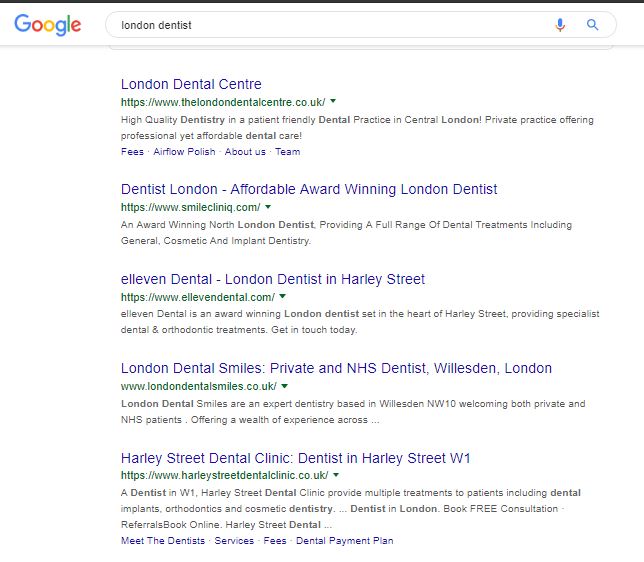
You want to have a look at what your competitors are putting in theirs and create something similar for your page.
This is the first thing someone will see of your website when they do a search in Google, so you want to make it stand out.
Some people put their phone number in the title or meta description.
But generally, this is a bad idea because if someone calls you up because the phone number is in your description and doesn’t click on your website then Google doesn’t see the click.
Google will rank you higher if more people click on your website in the search results, so you want to get people to click.
A lot of people forget about doing the titles or meta descriptions which means Google will fill it in with details it finds on your page.
But this isn’t ideal because every time Google chooses something on your page it means your title and meta description changes – which has an effect on where you rank.
So make sure you tell Google exactly what the page is about in the title and meta description and make it user-friendly and interesting so people click on it.
If you look at the search results you will see words that are in bold because Google sees these words as related to the search term.
So you will want to look at the search results for the keyword you are looking to rank a page for, then see what words are bolded – then add those into your title or meta description.
This will help give relevance and it will also make your website listing stand out a little more.
12. WordPress Plugins
When it comes to WordPress plugins, you want to delete all the ones you are not using and update all the ones that you are.
If you haven’t got updated plugins but your competition has, then Google will probably give your competition a little bit more boost in the search engines.
Simply because this tiny little thing means that someone is looking after the website.
Also, you want to delete the plugins you are not using because even though they are not active, they will still be on your website and loading in the background because of the plugin code that is placed in your websites code.
As for the best WordPress plugins, well there are many good ones but here are a few good recommendations.
- All in One SEO Pack (helps with page titles, meta descriptions and OG data when sharing a page on social media)
- Auto Optimise (helps to minify CSS and JavaScript)
- Dublin Core Metadata Generator (helps rank website better in Bing)
- Easy Accordion (helps for a good FAQ accordion)
- Enable Media Replace (helps with replacing images)
- Google Tag Manager (one place for all your tracking codes for things like Google Analytics and Facebook Pixel)
- Redirection (helps with redirecting old pages to new pages)
- Responsive Lightbox & Gallery (makes your images enlarge in a popup)
- Social Media Flying Icons (good looking social media icons)
- Updraft Plus (helps with backing up your website in case it gets broken)
- WP Forms Lite (simple easy to use contact form)
- W3 Total Cache (helps with speeding up your website)
13. Mobile Friendly
It is important that your website works well on mobiles because a lot of people use their phones to make Google searches.
Go to the Google Mobile Friendly Test to see how well optimised your website is for mobile.
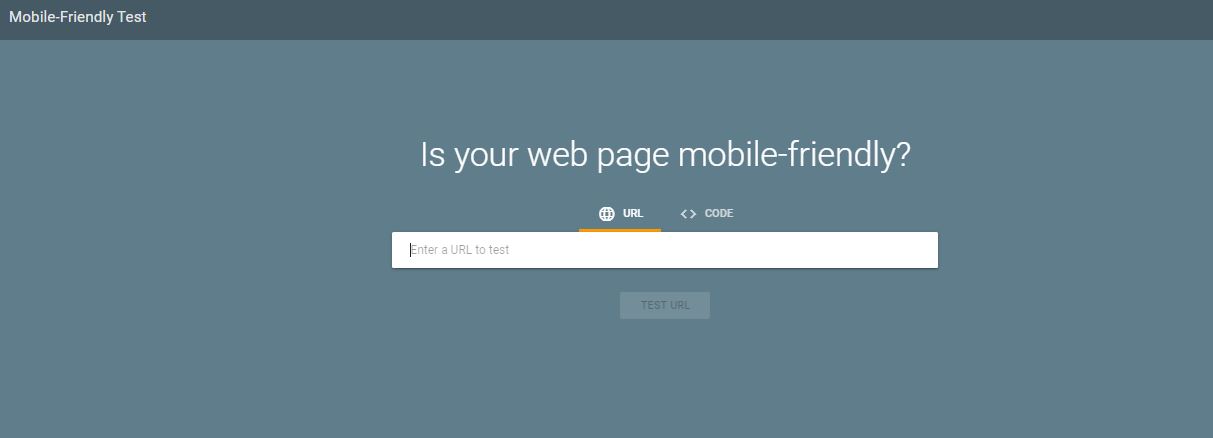
You can also check in your Google Analytics where your traffic is coming from.
Have a look and see how much is coming from mobile – you might be surprised.
So you need to make sure of a few things to make your site mobile optimised.
- Load time needs to be quick because people may be on a 3G or 4G connection. So having large images or slow loading pages means people may click back to Google in frustration.
- Your website needs to be responsive, this means on a mobile the website changes its size to fit on a phone screen. This is important because it looks professional and people can use your website properly.
- Your website needs to be laid out well for mobile users. This means short sentences with space in between. It is good to go on your website to see what it is like on a mobile phone. You will quickly see how well it is laid out and how you could improve it.
- You need to make your phone number click to call, so when someone is on their phone they can tap a button on your website and they can instantly call you.
If you can’t do these things on your website to make it mobile friendly, then you may need to build a new website.
But in the short term just do what you can do to improve it, and if you need to – start planning for a new website to be built.
14. Finding Quick Wins with Google Analytics
One of the easiest ways to find quick wins for your website is to use Google Analytics to find the keywords you are ranking for on the 2nd or 3rd page.
They are already pretty close to the first page so with some effort you can get them ranking on the first page where all the traffic is because very few people go to the second page of Google.
So you take these pages and then optimise them with the on page optimisation techniques in this guide, and then you find ways to send links to them.
You can do this easily with blog posts on your own website, or you can get sponsored blog posts on other peoples websites.
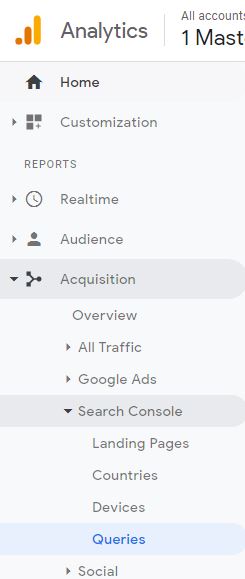
How to find your keyword rankings in Google Analytics
When you are logged into Google Analytics, go to Acquisition on the left-hand sidebar.
Then click search console – and then click on Queries.
This will show you all the search terms you rank for.
You can also simply go to your search console and find the same information there.
Next, you want to click on average position so the search terms are arranged in ranking order in Google.
Then simply find all the search terms that are above the 10th position up to 30th position – these search terms are the ones on the 2nd and 3rd page.
15. Finding Related Keywords
The reason you want to find related keywords is because you want to include them within your content.
This is because Google has linked those keywords together which means they are relevant, and you should have them on your page.
There are two ways to find related keywords
Keywords Everywhere
This is a chrome plugin, which shows you related searches and their search volume whenever you do a Google search.
It is really handy to quickly see what keywords are good to include on your page.
Googles Related Searches
This is located at the bottom of the page on whenever you do a Google search.
This is what Google thinks are the search phrases that closely match the search term you have entered.
The best way to use these related searches is to use them for your H2 to H5 heading tags.
They will help you structure your page so it is good for readers but also it will tell Google that your page covers everything in one page – so it will rank you higher.
16. Find Out What Customers Are Searching For
This one may sound obvious, but you would be surprised.
Sometimes we name things with technical industry jargon.
But the only people who know that jargon are people in your niche and maybe your customers don’t know what it means.
So if they don’t know what the industry jargon is, then they will put in a search term that makes sense to them.
So the best thing to do is to go and do some Google searches and see what comes up in the autosuggest from Google.
You can also use the Keywords Everywhere chrome extension which shows you all the related searches to your keyword.
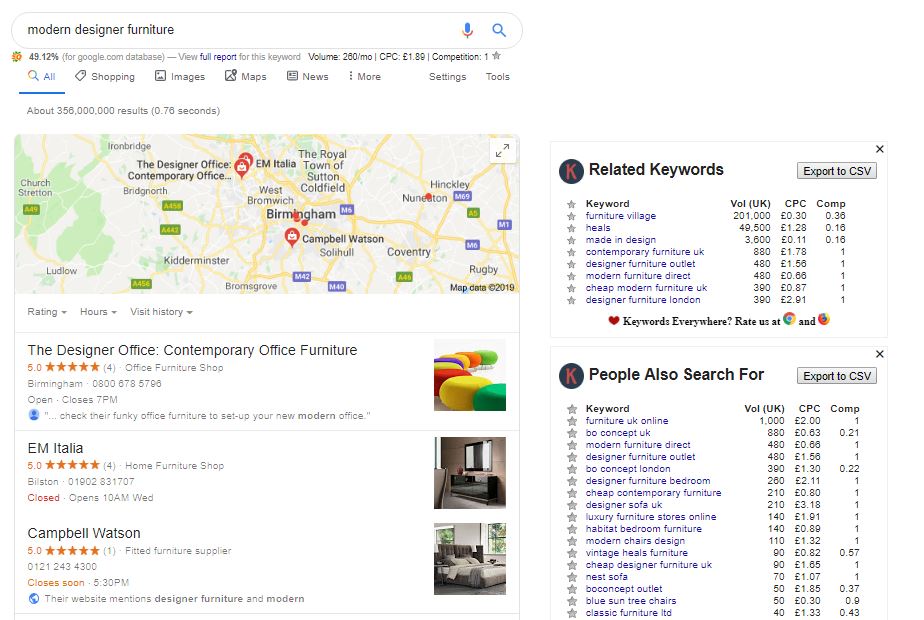
You should go on forums to how people talk and how they phrase things.
This is especially true if you sell products on your website because you may call those products a certain thing.
For example, you may call a category “Trinkets” or “Accessories That Make The Outfit” when no one would search for that phrase instead they may search for “Gifts For Her” or “Women’s Necklace”.
Then on a product page, you may call the product by its technical name that only people inside the industry know.
For example “The Paris Collection Women’s Necklace” compared to “Women’s 16ct Gold Necklace with Pendant”.
The second one is something someone would put into Google when searching for a necklace, whereas only people who know what the Paris Collection is would search for the first one.
17. Use Heading Tags Correctly
Header tags are the headings in your content.
You have the main heading which is a H1 – this is usually the page title, then you have subheadings H2, H3, H4 and H5.
The H1 is the most powerful heading and it scales down in power as you move down to H5.
Header tags are one of the most important factors when it comes to ranking in Google.
They can make a big difference as Google uses them to figure out what your page is about.
If you don’t have your keywords in the header tags then Google won’t give you as much credit for those keywords.
Think of it like you want to explain your website or business in short headlines.
So you start off with the main keyword in your H1.
Then you do a Google search for your main keyword and look at the bottom of the search results for Googles related searches.
Then use these related searches as your H2, H3 and H4 headings.
For your last heading on the page whether that is a H4 or H5, you want to say your main keyword in a slightly different way to how you did in the main H1 title.
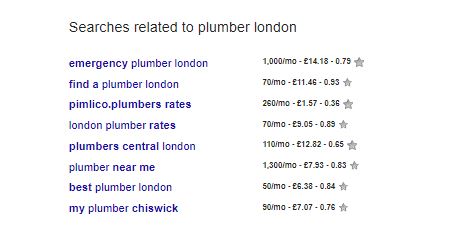
For example, if you had a page for a plumber in London
H1 – Plumber in London
H2 – 24/7 Emergency Plumbing Service
H3 – We Cover All Parts of London
H4 – London Plumber Rates
H5 – Get the Best Plumber in London
You can see that simply using the related searches I have created the skeleton of what a good page should look like.
There might be more sections I can add to this later but it’s a good solid foundation to build from.
18. Use Keywords
At the end of the day, Google is not a person, it is a reading machine hooked up to an A.I. learning machine.
So if you don’t have the keywords that you want to rank for on the pages you want to rank, then how will Google know?
It is important to have the keywords on your page, which includes in your headings and your content.
If you write your content as if it is for a 15-year-old or an 80-year-old then you should naturally get your keywords in.
The best thing to do is write great easy to read content first, then go back over it and sprinkle keywords in.
Don’t go overboard – 1 or 2 of each main keyword on the page is enough for Google to recognise the page is about that keyword.
Of course, some keywords will naturally be used often.
For these keywords, you want to find other ways of saying the same thing.
For example on a plumbing website the word plumber, plumbers and plumbing are going to come up a lot on nearly every page.
So finding ways of saying the same thing for example – The technician or your Heating expert.
Just replace a few of the most overused words with slight variations but do it where it makes sense – again we are writing for the reader first and Google second.
19. Use LSI Words
LSI words are words that surround your main keyword in a conversation about it.
So if you are talking about plumbing, then words around that topic and related to that topic will come up if you were to have a conversation with someone about it.
For example
Get a Free Quote
Gas Engineers
Heating Engineers
Boiler Repair
Boiler Installation
Fully Qualified
Excellent Customer Service
Blocked Drains
Tap Repairs
24 hour emergency service
So basically if you look at all these, not once is the main keyword mentioned which is “plumber London”.
But you can look at that keyword list and as a person, you can summarise that this is all describing a plumber without actually saying plumber.
This is what Google does, it takes everything that you are saying into consideration and adds it all up and then comes to a conclusion on the quality score of your content.
You can do this manually by looking at the top 5 websites ranking for the keywords you want to rank for.
Then simply write down all the keywords that come up that you would use if you were talking to a real person.
Make note of the keywords that come up on a few of them as they are most likely more important to use.
The best tools we have found to find LSI keywords are Page Optimiser Pro, Cognitive SEO and Cora.
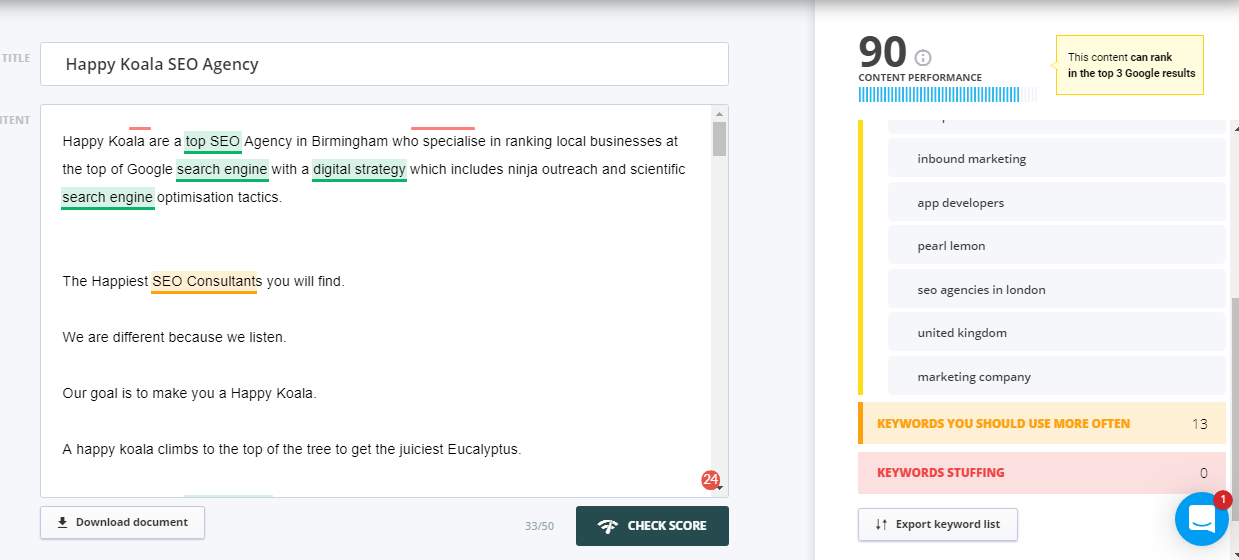
20. Better Content on Pages
You may have heard the phrase “content is king”, it is basically saying good content helps you rank on Google and it helps you make more sales.
Although content is not everything when it comes to ranking on Google if it is done in the right way it can help quite a bit.
The way you want to make your content is to write it out as if you are talking to a person who has very little clue about what it is you are writing about.
Remember there is a person on the other end reading it, so make it easy to read and interesting.
The 3 most important elements to good content are
- Text that a person would want to read and tells Google what your page is about.
- Good high quality and unique images
- Relevant videos
Text Content
When it comes to text you want to break it up so it is not one long wall of text.
We like to put a space between each sentence.
This makes it easy to read on mobile phones which is a large percentage of search traffic.
You want to write for a person and take them step by step why it is a good idea to do business with you.
Think of it like they need to justify this buying decision to their significant other, business partner and friends or family.
If you can give a person the answers to the questions that these people will bring up, then you will put them in a more secure mindset.
Build the trust with the person, and use all the tactics you can to get them to buy.
Things like money back guarantees, testimonials (video work best) and examples of past results all help to put a person at ease.
Most companies don’t do this, so if you are taking the time to put your customer’s at ease – then you are ahead of the game.
You then want to give them a big promise that you know you can fulfil.
People are naturally curious, so if you give them a big promise they want to know more to see if what you say is true.
Just make sure it is true!
“If your product or service can help someone or improve their lives, then it is your duty to do everything in your power to get that person to buy.”
You want to write the text in a simple jargon-free form because it should be able to be understood by a 15-year-old and an 80-year-old.
A lot of technical type businesses use a lot of industry jargon that only people in the industry understand.
These people spend a lot of time inside their industry, so they assume everyone knows what their jargon means.
The most important thing you want to do when it comes to writing your content on your pages is this.
Find out what Google is already ranking for that search term.
By this I mean, do a search for the keyword you want to rank for and see what Google is ranking in the top 10 results.
Are they blog pages, are they directory websites, are they homepages or are they a service or product page, or perhaps a category page.
Once you find out what types of pages Google likes for that search term you can then base your page around that style.
So if for example you find that most pages on the first page of Google are inner pages on websites, that are service pages specifically for that service.
Then that is what you replicate.
Then you notice they all have around 1000 words on their page, and 5 headings, roughly 3 or 4 images and a video.
So that forms your template for what you need to do, but it is good to add a little more so 1300 words instead of 1000 etc.
By replicating what is already being ranked at the top of the search results, you are telling Google “Hey, we see that you like this type of page, so we built one which is similar for you”.
In essence, the answer to ranking at the top of the search results is hiding in plain sight, on the first page of Google.
So if you can do these 6 things you are ahead of most websites.
- Break up your text with space in between each sentence.
- Write, so a 15-year-old and an 80-year-old can understand it.
- Remove as much technical jargon as possible.
- Answer difficult questions that important people in your customer’s life will ask them about their purchase.
- Give a big promise to hook people in.
- Find out what Google is already ranking at the top of the search results and replicate it
Optimising Content For Google
Now you have your great content, it is now time to optimise it for Google.
You can try and do it manually and type in your main keyword in Google search and look at your top competitors.
Then go through the painstaking process of finding out what keywords they use in their titles and in their content and everything else.
Instead, it is best to use tools to shorten the process.
You still want to take a look manually to see what pages Google likes to rank at the top for that search term, so you can replicate the style.
But the tools you should use to optimise for Google are
Page Optimiser Pro
This is a great tool that is low cost and for people on a budget.
It tells you what you need to do on your page to make it rank better.
This includes things like
- what keywords you should use
- what type and how many title tags you need
- How many images, videos, schema markup you need
- what alternative words you can add that are similar to your main keyword
Great little tool, that basically compares your page to your top competitors, and then tells you what things you need to have on your page to rank higher.
You can get it at Page Optimiser Pro.
Cognitive SEO
This one is a little more expensive than Page Optimiser Pro, but it is a really nice tool.
What it does is analyse your text on your page, and then analysing your top competitors text on their pages.
Then it tells you what keywords, related keywords and other general keywords that your competitors use.
This is great because it can often find important topics that you just haven’t talked about on your page.
Something that is so obvious to you because you are living and breathing in the industry, that is very often times so simple you forget to even mention it.
By using Cognitive SEO you can fill in the blanks and write a more complete page that answers all the questions that a customer would have.
You can get it at Cognitive SEO.
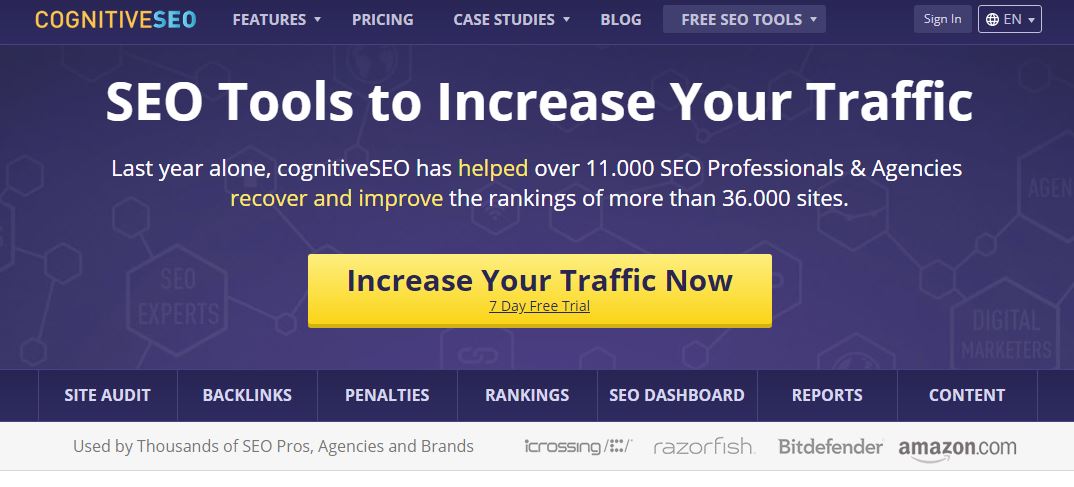
Cora
Last but not least is the king daddy of them all, Cora is the most expensive but when it comes to analysing the competition it does more than any other tool on the market.
It measures around 1000 ranking factors, so you can really go in-depth on what to tweak.
Out of those 1000 factors it then gives you a list of the most important factors that will move the needle.
A brilliant tool which is best used when the other two haven’t quite got the job done because of it being a bit more pricey.
You can get it at Cora.
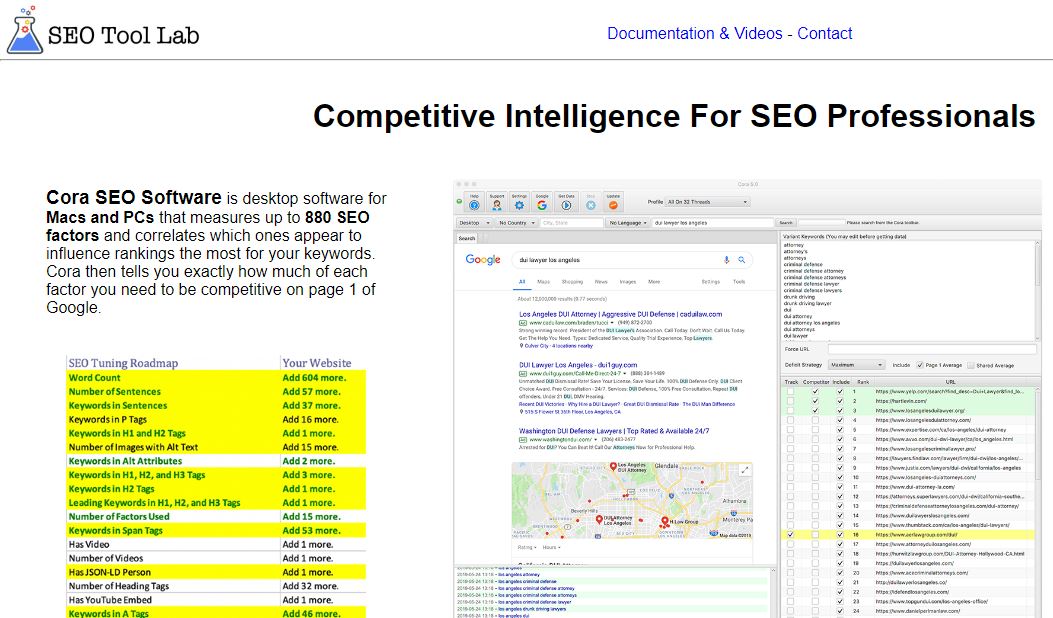
21. Internal Linking
Google views each page on your website as a different website.
So when one page links to another, it is like you are getting a link from a different website.
It is not quite one for one – as it is more powerful to get a link from a different website than it is your own.
But the principle still applies and you want to link to different pages on your website strategically.
You want to use anchor text (which is the text that is usually highlighted in blue and links to another page or website) to link to your different pages.
The anchor text you use should be search terms that are around your main keyword for that page.
Basically, think of a 10 or 20 different ways you can describe your product or service in a few words and use that as your anchor text.
This means sometimes you will get the main keyword in naturally, and other times you will get similar or related keywords in naturally.
This gives you a diverse range of anchor text which is all similar but different.
This then basically tells Google what that page is about.
In regards to your main keywords that you want to rank a page for, you will want to save that anchor text for external websites because it will work better.
This means when you get a link from an external website that is your main keyword, then you should not have many exact match keyword anchor text linking to that page.
But you will have lots of similar match and related match anchor text going to that page.
So when getting a link from an external website to your page with exact match anchor text it will have a much bigger impact.
This also keeps your anchor text more balanced and it makes sense to Google’s algorithm that something should be described in multiple different ways but mean the exact same thing.
It is unnatural to have the same anchor text over and over again.
Where To Use Internal Linking
You want to use internal linking where it makes sense to do so.
So many people link way too much which causes over optimisation issues as they have a hundred internal pages linking to a page with the same anchor text.
It makes sense to use internal linking on the Home Page linking to other main pages and category pages.
Also, it makes sense to link category pages to product or service pages.
Basically, think of internal linking as a user experience mechanism – it is simply there to help the people visiting your website to navigate it better.
The best place to use internal linking is on your blog posts.
The reason for this is because you get to write about a topic that is about your product or service, and then link it to the product or service page.
If you write 5 blog posts around the topic of each product or service page.
Then link to that product or service page using different anchor text which is similar or related to the main keyword.
This builds a lot of relevance and it gives Google what it wants which is interesting and unique content.
You want to make these blog posts as good as possible and not just phone it in.
So you should make a good effort to write something that is over 1000 words and covers the topic quite thoroughly.
This will help the blog post get noticed by Google, and if it is good then it will start ranking in the search results.
It might not rank on the first page because you need to get links generally to do that.
But, simply because it is being ranked Google will give the rest of your site more credit and everything will be pushed up.
The reason is that Google knows it can trust you a bit more and it likes you a bit more because you are giving it what it wants.
(I am not saying you don’t get the ranking benefit if your blog post doesn’t rank in the top 100 – but it makes sense that if you do rank in the top 100 Google likes you more)
So when this blog post is linking to your product or service page, then that page will get some credit and it will be pushed up in the search results.
So basically you are getting 4 benefits with one piece of content.
- You are providing quality content for people who visit your website can read
- You are giving Google what it wants with fresh and unique content
- If your blog post is good it will rank in the top 100 of the search results
- If your blog post ranks in the top 100 the rest of your website will get a boost, and especially the internal pages it links to
22. Outbound Linking
Outbound linking is where you link to another website from your website.
There are many reasons why you should do this but the main reason is you when you want to link to a piece of content that covers the topic in more detail.
For example, if there was a news article or a study then it is good to link to those pages when you are talking about that subject.
Or perhaps you link to a local page like your local council page to give more relevance for the location.
Or perhaps you link to a page explains what something is in factual detail like Wikipedia.
Generally, you will be linking to authority websites that have in-depth content on the subject that you are writing about on your page.
When it comes to outbound linking you should use it sparingly on your product and service pages and use it a lot on your blog pages.
You only want to link to high-quality sources that you trust and you would gladly recommend that website to a good friend.
If you wouldn’t recommend it to a friend then you probably shouldn’t link to it.
There is an argument over whether you should make your links Do Follow or No Follow.
Do Follow passes power to the website it links to, which helps it rank.
No Follow links don’t pass as much power to the website it links to because it is saying to Google that you don’t know if you can fully trust that website.
Personally, if I link to a website on my webpage I use a Do Follow link because I would happily recommend that page to a friend of mine or my nan or my customer.
In my eyes, if I link to high-quality authority websites in my industry with Do Follow links, it makes my referrals carry more weight in Google’s eyes.
This is just my opinion so take it with a pinch of salt.
But it makes sense to me that Google would prefer a website that has a lot of Do Follow links to lots of trustworthy and high-value websites in the industry.
Compared to a website that links to other websites but most of their links are No Follow.
Again this is my opinion, so do what you feel is best for your website as both ways work fine.
23. Schema Markup
This is very important for SEO
Schema.org (often called Schema) is a semantic vocabulary of tags (or microdata) that you can add to your HTML to improve the way search engines read and represent your page in SERPs. Reffer to https://moz.com/learn/seo/schema-structured-data
24. Get Directory Links
Some of the first links you should get are directory links.
Directories are websites like Yellow Pages and Yelp where you list your business details like your business name, address, phone number and website.
It is good to have your basic social media accounts registered first because in some directories you can add your link to your Facebook, Twitter, Youtube and other social websites.
Some of them let you add a video, so it is good to have at least one video done – even if it is a basic slideshow type video with some basic information about your business.
The main things to note when it comes to filling out your details on directory websites is that you want to fill your profiles out fully.
This includes descriptions, logos, images, products, services, opening times, social profiles, videos etc.
Give them everything they ask for because a good directory listing helps it get found by Google, not only that but you never know – someone could see that one day and if it is not good then you may have lost that customer.
There are 3 types of directory websites
- National directories that most people have heard of like Yell and Yelp. These bigger national directories help to validate your business as a real entity in Google’s eyes. They are also usually quite powerful and help with passing that power over to your website.
- Local directories like your cities newspaper as they also have a business directory section on their website. Local directories let Google know you are in that area so it gives you relevancy for your location.
- Niche relevant directories which are specifically for your industry – for example, a directory for dentists. When you list your business on a directory that has lots of other businesses similar to yours, it gives your website more trust because you are listed where your peers are.
There are 2 ways to find directories to get on.
The first is the easiest which is sign up for Bright Local and add your website and Bright Local will find all the directories you should get on.

The second way is to do it is manually and type in Google
Business directories
Dentist directories
London directories
Then manually go through them.
Personally, I think Bright Local is amazing and I use that first, then if I want more listings I then start doing research to find directories I am not on.
You will also find that people have done the work for you and created top 30 directory lists, so if you Google
Top business directories
Top dentist directories
Top London directories
You will find lots of lists which can save you time.
So when you put these two tactics together you should be able to find all the best directories to get your website listed on.
25. Get Social Media Links
The reason to get your business on social media platforms is because
- Your customers may find you there at some point in the future
- It is what normal businesses do so you should too
- They help you rank higher so it is good to get on a bunch of them
- They give you an alternative way of marketing
- They help build your brand across the internet
So the best way to see all the social media platforms you can get on is to go to Knowem which lists them all.
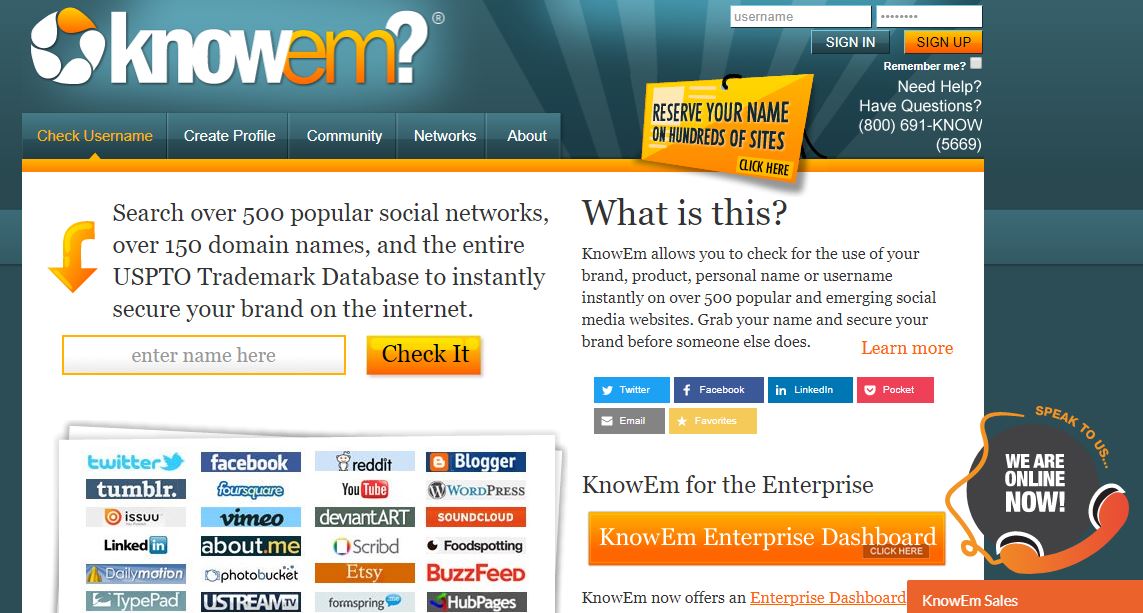
Basically, register for all the ones that look good to you.
Make sure you fully fill out your profile on each one.
When you do it is a good idea to have some images, a video and some content you can use.
This is so if someone does visit your social profile, at least there will be something there.
When you are filling out these social profiles fully make sure to add links to your website, your other social properties and your Web 2.0’s.
This is good because you have high powered websites linking to other high powered websites, and then they all link to your website.
This all helps you rank higher in Google because you are acting like a brand.
You are saying to Google that you want to be everywhere that your potential customers are.
The reward for this is because you are acting like a brand you will get treated like a brand and be taken more seriously in the search results.
The top social sites you should be on are
- Youtube
- 500px
- Flickr
- Disqus
- Gravatar
- Vimeo
26. Get Web 2.0s
Web 2.0’s are all the other sites on the internet that you can get a profile on that aren’t social media or directories.
You can use Knowem to find all the Web 2.0’s you can get listed on.
So this includes things like sites you can create a blog on like Blogger, WordPress or Weebly.

It also includes bookmarking websites where you can save your favourite links, this includes sites like Trello and Instapaper.
Then there are other sites like Slideshare where you can upload a slideshow (you can use the same slideshow that you used to create your first video).
One trick with Slideshare is that you can add a backlink on the 4th slide and onwards.
To do this, simply open your slideshow in Microsoft Powerpoint or Google Slides.
Then on the page you want to link from (4th slide onwards) you simply add a link.
Then when you upload the slideshow to Slideshare you will have a high powered link to your website.
ISSUU is a site where you upload PDF files to.
The easy way to make a PDF is to create a Word document or Google Doc with content in and make sure you have links to your website and other social properties.
Then save that document as a PDF.
Just like the social profiles and the directories, you want to fill out your Web 2.0’s fully.
Add content to the pages which include images and videos, then fill out all your details.
You also want to add links to your other Web 2.0’s, social properties and your website.
For example, on your Blogger blog, you can link to your website, your Facebook, your Tumblr, your WordPress, you Twitter – so on and so forth.
The reason for getting all these Web 2.0’s and socials is to build your brand across the internet.
It also gives you places that you can send content which links back to your website – which in turn helps you rank higher in Google.
It is mostly for SEO purposes to rank higher in Google as most people are probably not going to see them.
But they are super useful to help nudge your website in the right direction.
The blogging websites which includes Blogger, WordPress, Weebly, Tumblr and Live Journal – they are the most useful.

This is because when you write a new blog post on your website you can use IFTTT to send your latest post out to these blogging websites.
Within that blog post should be a link to one of your product or service pages using a keyword you want to rank higher for.
By sending the blog out to the blogging websites and social properties like Facebook, Twitter and Linkedin – it means you get more power and more relevance about that topic for your website.
In turn, this all helps give you solid foundations and pushes you up the rankings because most likely your competition is not doing this.
They may have 1 or 2 social accounts like Facebook and Twitter, and that’s it.
So when Google can see you all across the internet on lots of sites it knows and trusts, and your competition isn’t there – then it is probably going to trust you a little more.
The main Web 2.0’s you should get on are
- Blogger
- WordPress
- Live Journal
- Weebly
- Tumblr
- About Me
- Google Site
- Medium
- Trello
- Evernote
- Diigo
- SlideShare
- Instapaper
- ISSUU
- Quora
- Buzzfeed
Remember to link each Web 2.0 to all your other Web 2.0’s and social properties and of course your website.
The most efficient way to do this is to open each account, then go back to each one and put all your details in.
This way you will have all the links to your other Web 2.0’s and social properties ready.
27. Google Maps
There are two types of Google Maps.
There is your Google My Business map which if you fill out your Google My Business fully it will be well optimised.
Then there is the Google My Map which you can create in your Google Drive.
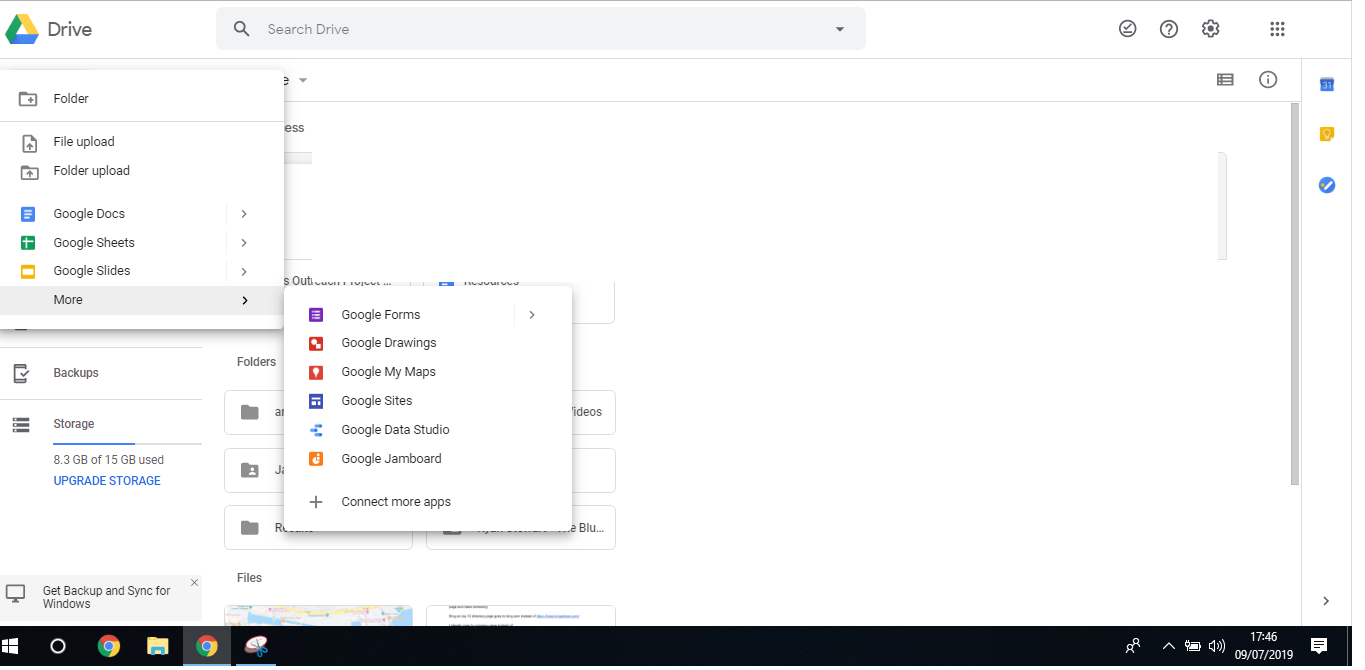
The Google My Map that you create in Google drive can have a lengthy description and you can put all your social and web 2.0 links in too.
This means all your social and web 2.0’s are getting a link from Google which is good.
Also once you have verified your Google My Business, you can get a Do-Follow link to your website.
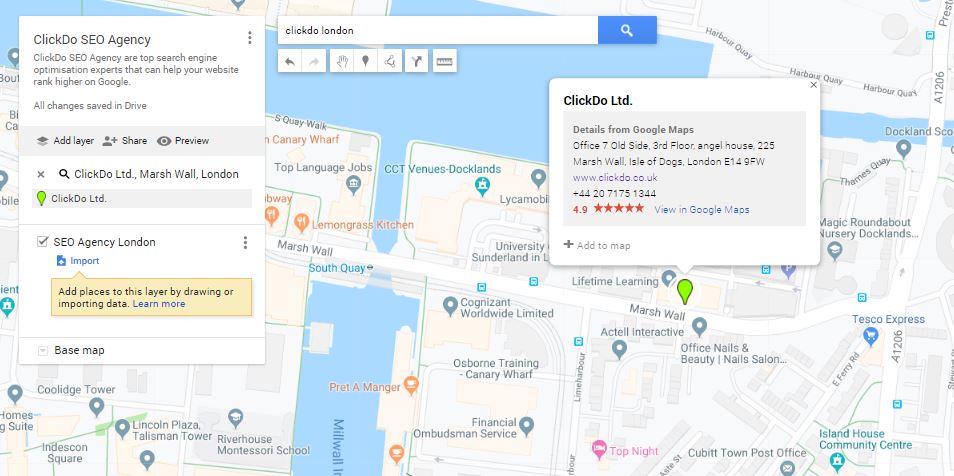
A do-follow link is more powerful than a no-follow link so it is a good backlink to get.
When you Google My Business has been verified, your business will come up with a green marker.
This will then give you Do Follow link with your business address in.
Simply click add to map and then you have created it.
You want to call the My Map your business name, and then add a layer and use your main keyword as the title of that layer.
So it looks like
Joe’s Dental Practice
Orthodontist in London
Then when you have created this Google My Map, you will want to embed it on all your web 2.0 properties.
.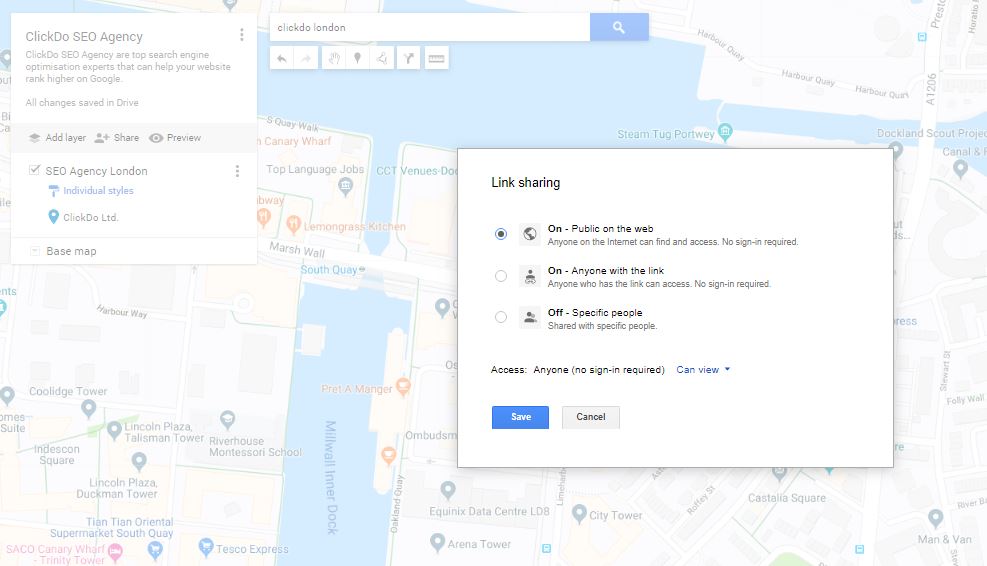
The websites you can’t embed it on, you should make a link to it like on your Facebook, Twitter etc.
To get the right link to share you want to take the link that Google gives you and put it through a 301 Redirect Checker.
This will all power the Google My Map up and because you have a Do-Follow link going to your website – it will power your website up too.
28. IFTTT
IFTTT stands for If This Then That.
It basically takes content from one place and puts it in other places across the internet.
These other places are the social profiles and Web 2.0’s that you have created signed up for.
So you can post in one place, and that will get sent to all your other web properties which saves you time and effort.
Not only that but all the places IFTTT puts your content gives you a link back to where the original content was.
So this helps give you a little boost in the search results.
Before you begin, you want to set up all your social profiles like Facebook and your web 2.0’s like Blogger.
Then once you have done that, simply go to IFTTT.com and create apps that link your properties together.
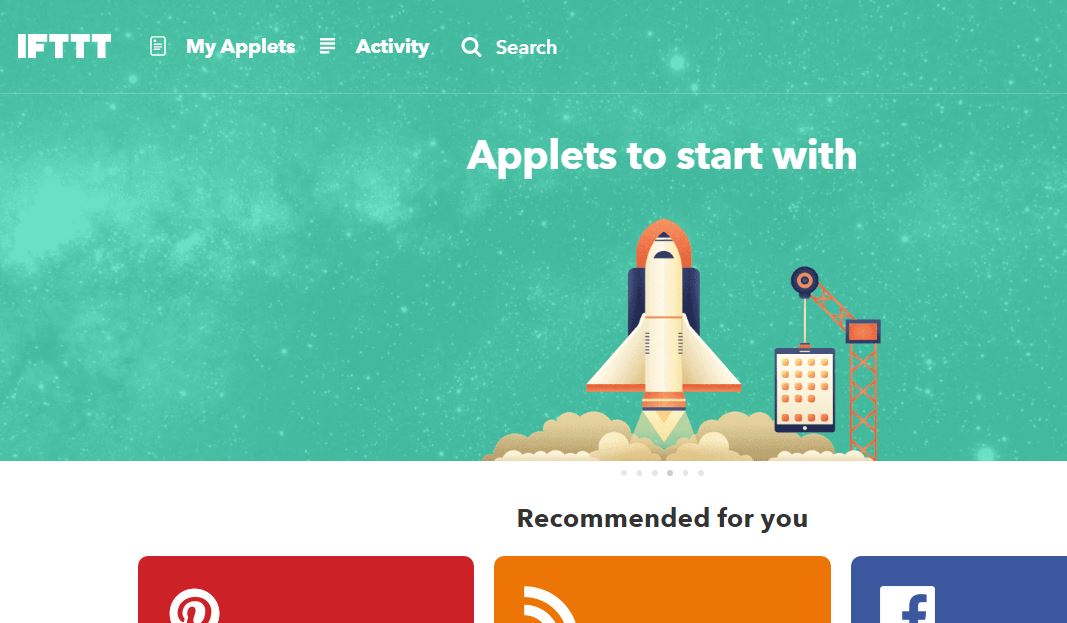
First off you want to start with your RSS feed (so when you post a new blog post it gets sent to your social and web 2.0 properties).
Your RSS feed address is usually www.yourwebsite.com/feed
To find the apps on IFTTT you simply search for
RSS to Facebook
RSS to Twitter
RSS to Tumblr
RSS to Blogger
RSS to WordPress
RSS to Google Drive
RSS to Evernote
RSS to Weebly
RSS to GDrive
RSS to Evernote
RSS to Diigo
RSS to Pocket
RSS to Pinterest
RSS to Trello
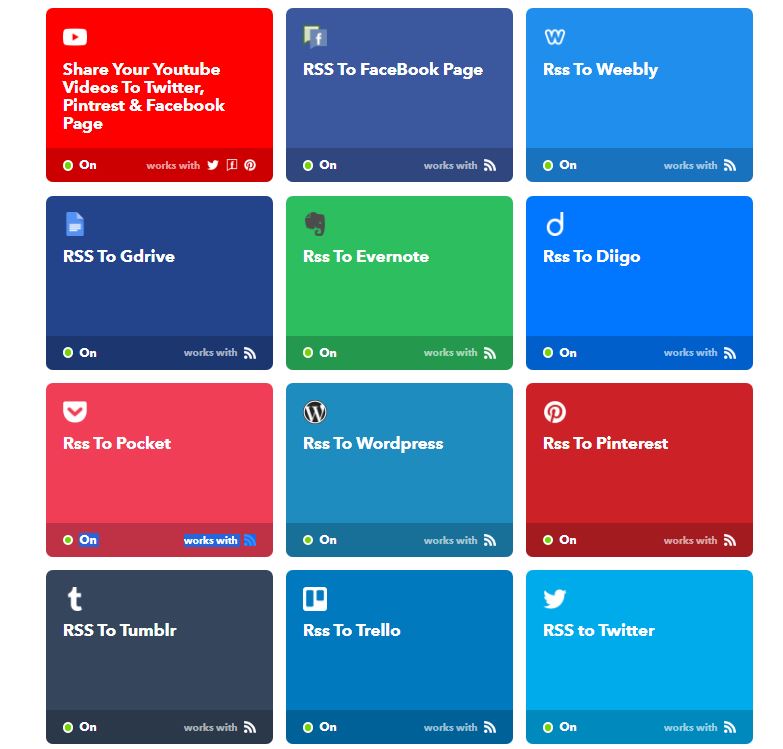
You also want to link your YouTube to these properties too
YouTube to Facebook
YouTube to Twitter
Etc
You can also send your tweets from Twitter out to your bookmarking sites
Twitter to Pocket
Twitter to Diigo
Twitter to Google Drive
Twitter to Evernote
Twitter to Trello
Twitter to Bitly
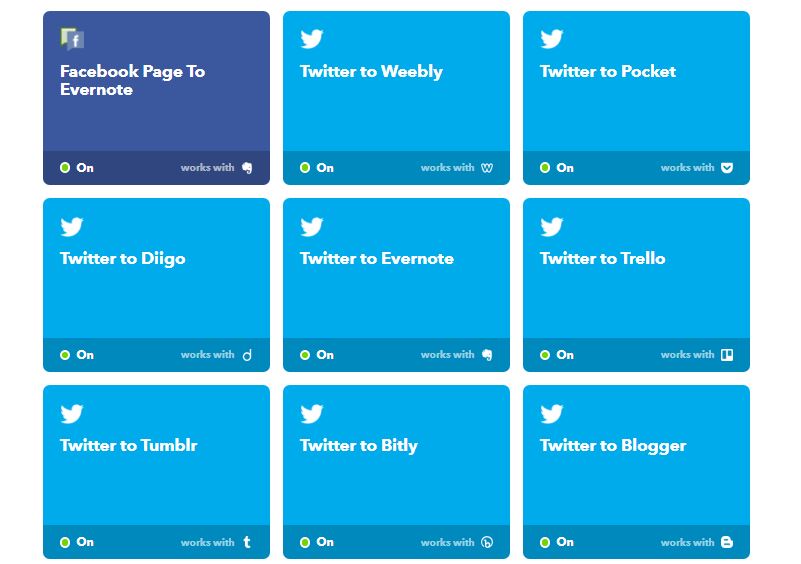
On top of that you can also automatically tweet messages from authority profiles in your niche or industry.
The reason for doing this is it fills up your Twitter with relevant content.
By doing so your Twitter gains authority and trust, and because these tweets are being sent out to your bookmarking sites they are getting links.
Your Twitter then links back to your website which powers it up a little bit more.
To retweet automatically just type in
Retweet by user
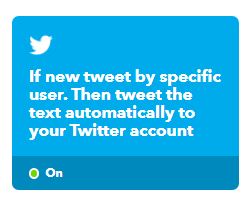
A good rule of thumb is to pick just a few good accounts to retweet their messages on Twitter.
The last thing you want to do after all this is to sign up for Quuu and Buffer.
Quuu will automatically send relevant content to Buffer each day.
Simply go to the social profile settings in Quuu, then click on your social account – then add interest categories.
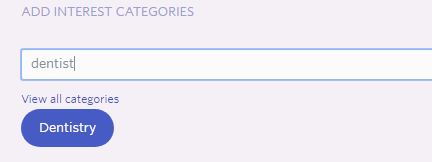
Buffer will automatically post this content to your Facebook, Twitter and Linkedin.
This is a great way to get extra content on your social profiles, and once it is set up it runs automatically in the background.
The one problem is sometimes you may find Quuu doesn’t have content on the niche that you’re in.
But it does for most main niches and industries.
Unfortunately, if Quuu doesn’t have content for your niche, you will have to do it the old fashioned way and do it yourself.
However you can use Buffer to create posts which can be sent out to your Facebook, Twitter and Linkedin.
This will at least save you some time posting to each one of these.
Then when you add the IFTTT syndication where it sends those posts out to all your other social profiles and Web 2.0s, it means your content will be spread across the internet in lots of good places.
Which one thing to keep in mind is to not just talk about yourself and your business.
Create posts linking to other websites in the industry because this creates relevance and makes you more of an authority in the space because you are connected to other authority websites in your business niche.
Once you have set up your IFTTT, you are now ready to publish your blog posts because when you do, it will be sent out to all your social and web 2.0 properties.
This will help your website rank a little higher across the board, but more specifically it will help the target product or service page you have linked to from the blog post.
This is because of the power of the links from the IFTTT syndication going to your blog post which passes that link power to your target page.
29. Create Videos
If you have no videos then you need to create a least one and upload it to Youtube.
The easiest way to create a video is to create a basic slideshow video with a little bit about your business.
The reason for this is because you can add it to social media, blogs, directories and your website.
To create images for your slideshow go to Canva and click on create a design and use the custom dimensions 1200×720 so it is the size of a Youtube video.
Then find a template that suits the style of your website and add your images and some text on each slide about your business.
Then you need to get a Slideshow Maker and create a slideshow, and you should save it as a video.
Then simply upload to YouTube and you have a video.
The important thing about videos is that you
- Add you keywords in the title in a natural manner
- Add a unique description with your keywords in of about 300 – 500 words
- Add a link to your website and some of your social properties in the description
- You should create a playlist and add the video to it, then find top videos which are related and add them to that playlist because this will give it a boost.
- Add some tags to the video about 10 is plenty
The ideal way to use videos for SEO is to have a video for each page of your website.
This is because you will have your keywords in the YouTube video which has a link to your page exactly about that topic.
Then on your website you will have a page with that YouTube video that is exactly what that page is about.
This works quite well for giving a boost to pages.
It even works when you do add someone else’s video on which is super relevant to the page.
If you haven’t got a video then on your blog posts add someone else’s video as a placeholder until you have created your own.
For your main product or service pages you should create a professional video for each one.
A great place to find someone to create videos for you is Fiverr and Upwork.
There is a lot on there, and you will have to dig through a whole bunch to find the ones that suit the style of your business.
But when you do, you can now create good videos to add to your products and services pages.
The thing is, most people don’t usually watch videos on websites so it is mainly there for the SEO benefit you get from it.
But there will be some that watch is so make sure it is at least decent and its good to have as high quality as you can get without breaking the bank.
You can always upgrade them later, when your beginning good enough is good enough.
Also just like all the directories, social properties and Web 2.0’s you want to fill out your Youtube profile as much as possible.
This includes logo, cover photo, description and you want to add links to your website, social properties and Web 2.0’s in the about section.
You can add about 20 links here, which means the 20 links you add will gain some power from Youtube.
30. Create Blog Posts
Blog posts are important because of 2 things
- They should be helpful to your customers and give them information or knowledge which is either interesting or helps them understand your product or service better.
- They help you rank higher on Google
So the best way to write a blog post is to find a topic that your customers search for. learn about blogging skills here.
You can do this by going to Answer The Public and type in your niche, and it will give you all the questions people ask.
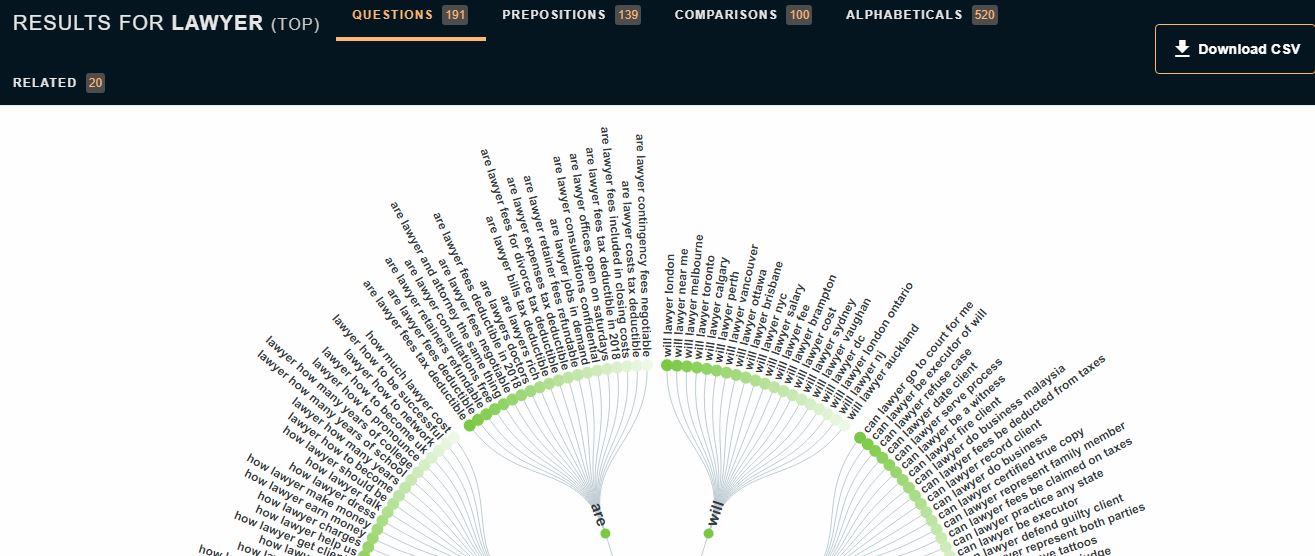
Then simply find one that relates to a page that you would like to rank and do a blog about that.
To figure out what to write you should do a Google search for that question and see what is ranking in the top 5.
Then you can use this as inspiration to write something similar.
If you take the best parts of the top 5 and rewrite it, and add some extra from your own expert perspective – then you will have a good blog post.
The most important things to remember when writing a blog post is
- It should be written for people and not Google
- It should be inspired by the blog articles ranking at the top of Google
- It should have images and a video
- You should link to authority websites from the blog article (the best way to do this is to find an interesting sentence or part of a sentence and do a Google search and link to one of the top websites)
- You should link to your target product or service page with keywords that you want to rank for
- You should link to other blog posts that are related
- It should be 1000 to 1500 words so it goes in depth enough to cover everything
Before you publish your blog post, you will want to have set up your IFTTT network.
This is because once your IFTTT is set up, it will automatically send your newly published blog post out to all your social properties and your blog websites.
This is a key part because this gives you automatic links every time you post a new blog post.
The way to do it is to add your RSS feed to IFTTT.
Your RSS feed is usually www.yourwebsite.com/feed
The platforms you want to send your blog posts to are
- Facebook page
- Blogger
- WordPress
- Weebly
- Tumblr
- Trello
- Diigo
- Evernote
- Gdrive
To find the apps on IFTTT you simply search for
RSS to Facebook
RSS to Twitter
Etc

So before you post blog posts you will want to set up all your social properties like Facebook and Twitter, and all your Web 2.0’s like Tumblr and Weebly.
Ideally, you want to create 3 or 4 blog posts which link to each service or product page you want to rank higher.
If you don’t have time to write them yourself, go on Upwork and find writers that specialise in your niche or are good at rewriting content.
Whichever way you decide, just give them links to the top 5 pages ranking for that keyword and ask them to write a 1000 words writing something similar.
It costs between $15 and $30 for a 1000 word article from Upwork.
Get 1 a week and you will soon start building up a good supporting foundation on your website by having good blog posts that link to your main product or service pages.
Another good way to get good content on your blog is to create an infographic.
The best infographic designer I have found is Leoramos on Fiverr.
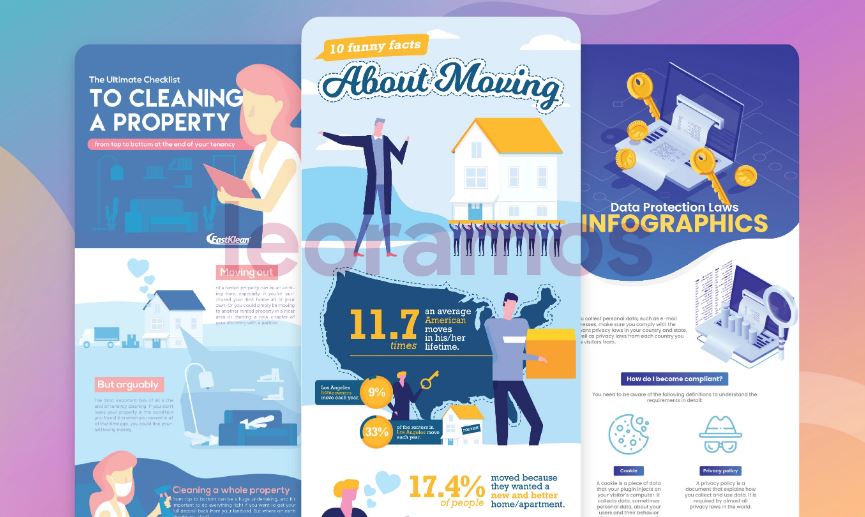
Once you have made your infographic and posted it to your blog, you can then post it on infographic websites which will give you a link back to your website.
For a good list of all the top infographic sites go to ClickDo’s Infographic List.
Some are free and some you have to pay for.
It is worth getting the free ones and the low cost ones because they are good links.
The way you get content for the infographic is the same as you would for creating a blog.
Find some good content that ranks at the top of Google, make your own version of it and send it to Leoramos on Fiverr to make a beautiful infographic for you.
Then when you post that infographic to your blog, you can also add the text that you wrote for the infographic and put it underneath.
Remember to link to a product or service you want to rank from this text.
So when the infographic websites are linking to your blog post with your infographic on, it will pass this link power onto the product or service page that the infographic blog post links to.
Usually, infographics are top 5 or top 10 lists.
Short and punchy but with interesting content.
They are meant to give a lot of information quickly and in a nice way.
So write some good content, find some interesting statistics and format it in a top 10 list.
You can also get inspiration by typing in infographics in your niche on Google.
31. Guest Posting
Guest posting is the cherry on the cake to everything else.
It is basically posting a blog post on someone else’s site which links back to your website.
You want the website to be relevant to your business and have other articles that are related.
The way to find guest posts is to type in Google
Dentist “guest post”
Dentist “submit post”
Dentist “write for us”
Dentist “become a contributor”
Dentist “submit an article”
Replace Dentist with whatever your niche is.
You may need to go broader if there aren’t many websites about your niche.
So instead you should search for your industry which will have a higher chance of finding websites you can add a blog post too.
You will find lots of great websites to submit a blog article too.
Sometimes you have to pay for these and they can range from $30 to $100.
You want to target websites with a high domain authority (DA) – 20DA and over is usually good.
You can see websites domain authority by installing the Moz Bar for Chrome and Firefox internet browsers.

When you are in the Google search results after searching for one of the Guest Post searches above, the Moz Bar will show the domain authority (DA) of each website.
You want to pick the websites with higher domain authority as they are generally more powerful.
If you are looking to get a little more technical you should put these websites in Ahrefs or SEMrush to see what traffic they have, and what their backlink profile is like.
But to keep it simple, use the Moz Bar and pick high domain authority sites (DA).
Also, use your eyes, does the website look like a good website?
If it looks good to you, then chances are it’s a good website especially partnered with having a high domain authority.
Then all you need to do is simply contact them through email or their contact form.
Then send the article and payment if they ask for it.
To get a good article you do the same as what you do to write your own blog posts.
Which is find good topics to write about, then do a Google search and send a content writer links to the top 5 websites and get them to write a similar article.
You want the guest post to be about a topic you want to rank for, so it is good to get your keywords in the title because this gives you a lot of relevancy.
Don’t keyword spam, but be creative and find ways of getting your keywords in the title.
You can also get your keywords in the anchor text which is the text that links to your website.
For the anchor text you want to get your main keywords in but also keep it quite general like
Get a good dentist in London
Dental Practice
Joe’s Dental Practice
www.joesdentalpractice.com
Orthodontist treatment
London Dentist
Invisalign Teeth Straightening
You can see how these are quite general, if you don’t know what you are doing, it can be easy to over optimise on your anchor text.
The real power comes from the title, the URL (the webpage address) and the topic of the blog post and website.
So you want to get on niche or industry related websites, but you also want to get on local websites in your city.
You can do some Google searches for websites in your city.
This will give you some variation on the types of websites linking to you.
If you don’t want to go through all this then you can hire SEO agencies to do it for you.
A few good ones are
ClickDo has used their 100+ guest post network to rank themselves number 1 for SEO Consultant London and all their clients at the top of Google. Their prices are good and the websites they use are high quality with real traffic.
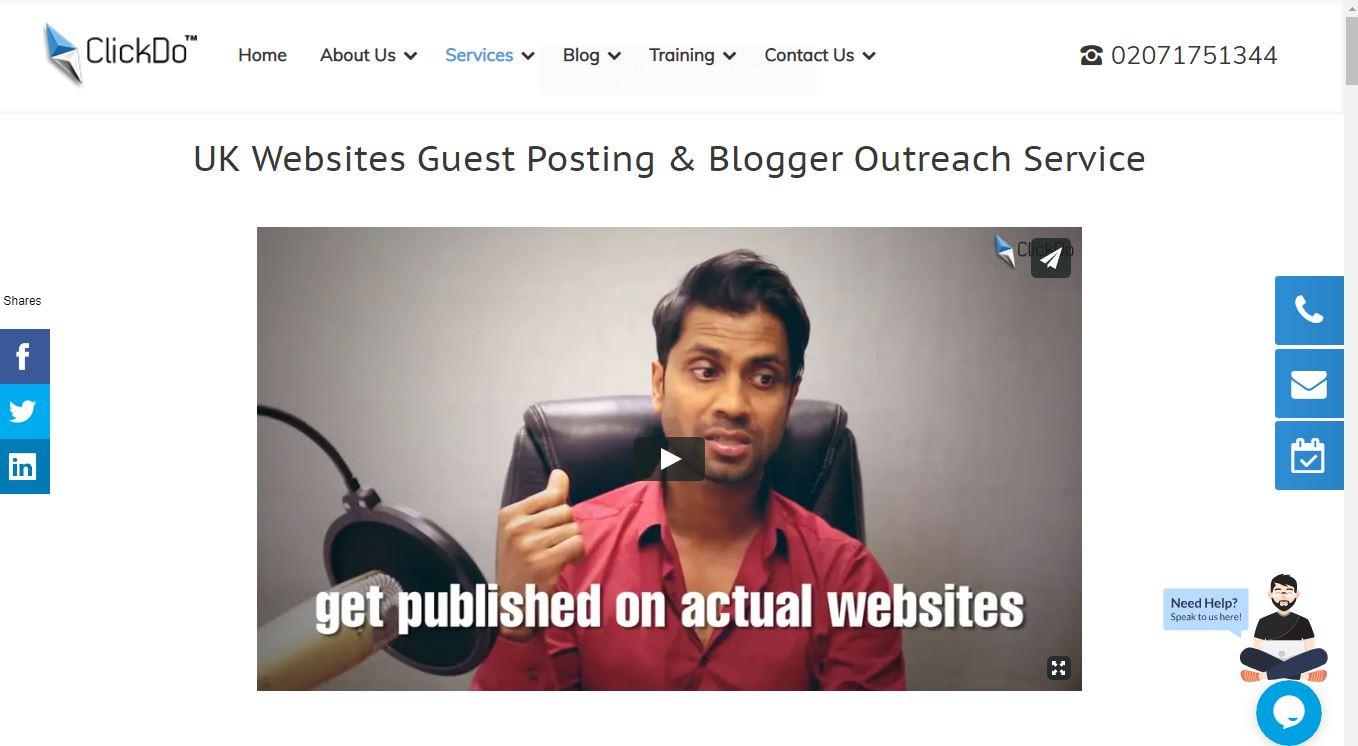
Quality Guest Posts
Quality Guest Posts are more expensive, their service is excellent and they are recommended by a lot of people in the SEO industry.
Outreach Mama Guest Posts
Outreach Mama is also one of the top guest post providers in the industry. They are a little more expensive but the quality is high.
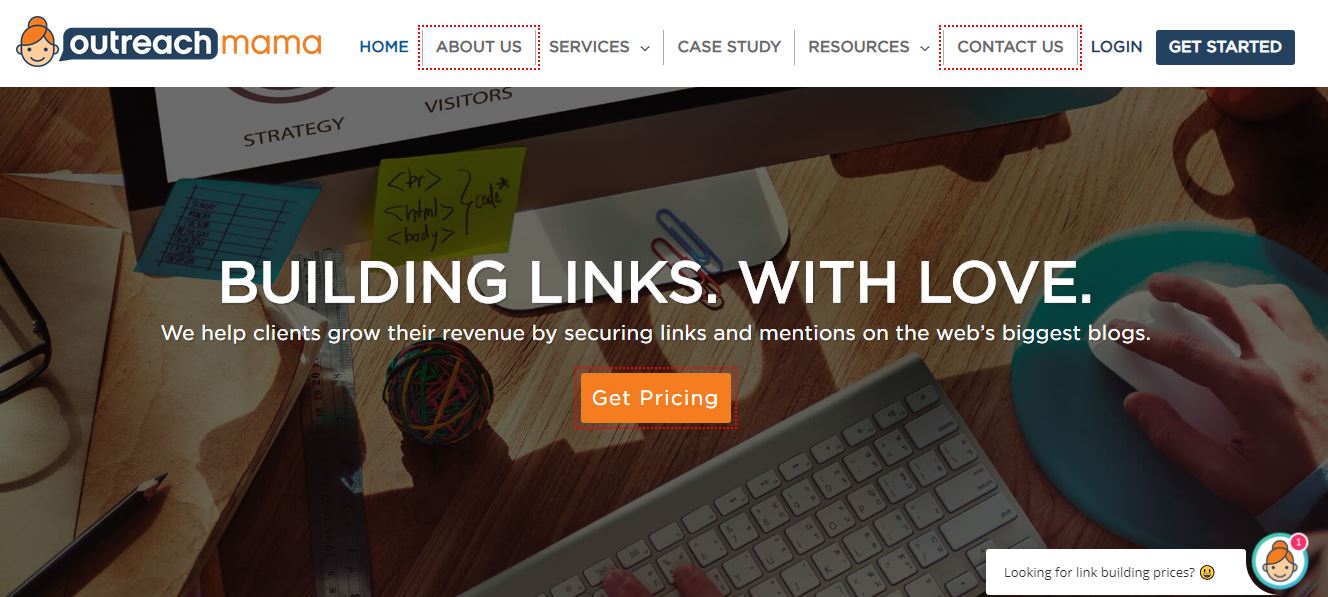
You want to link mainly to your homepage from the guest posts.
Once you have built up around 10 to 15 guest post links going to your home page, you can then send 1 or 2 to each of your main product or service pages.
You also want to link some guest posts to your best blog posts.
Then keep sprinkling guest posts to different parts of your website including your home page and blogs.
This will then power up all your website which will push the whole website up in the search results.
32. Google Ranking Tools
When it comes to ranking tools there are some essential ones to use which can help a lot with ranking your website higher on Google.
Website Rank Tracking Tools
You need to know where your ranking for each of your keywords. You can do this in Google Analytics but a dedicated rank tracking tool will make it a lot easier to see what is going on.
A lot of the time when you are doing SEO to your website, you will see long tail keywords go up and then your main keywords stay in place or go down.
This is why a rank tracker is important that can track all your keywords.
For example, you may see the short keyword ‘Dentist London’ go down in rankings, but the longtail keyword ‘dentist for braces in London’ may go up.
What this shows is that Google is responding to the SEO you are doing, and the higher rankings for your long tail keywords will mean that they will pull up your main shorter keywords over time.
You will very often see all the long tail keywords move up to the first few pages, then a few weeks later your main keywords will pop up to higher rankings.
The keyword rank tracking tools we recommend are
Pro Rank Tracker
Pro Rank Tracker is lower cost than most and is a good starting rank tracking tool.
Microsite Masters
Microsite Masters is good if you have a larger site because it tracks more keywords. It is more pricey but it is very good.
If you use Ahrefs, SEMrush or Moz you will get a keyword rank tracker included in the package.
Website Analysis Tools
These tools will help you rank higher on Google because you will be able to see how your website is doing compared to your competitors and how to fix the issues.
Google has a lot of great free tools that help to rank your website higher these include:
- Google Keyword Planner
- Google Analytics
- Google Search Console
- Google Mobile Checker
- Google Page Speed
GT Metrix
This shows you the speed of your website and what you can do to improve it.
Webpage Test
This also shows you the speed of your website
Screaming Frog
This allows you to see a lot of basic technical issues on your website like the size of images, titles, meta descriptions etc. This tool is a great place to start any technical audit of a website to find out what needs fixing.
Schema Markup Generator
Schema is important because it is the language that all search engines understand. So you should have it on your website. This markup generator is simple and easy to use, then you simply just copy it onto your website.
Knowem
Although it is not technically a ranking tool, by registering your websites on 50 to 100 sites that Knowem suggests. Then it will help create your brand entity and also to help give you a boost in the search engines.
Ahrefs
Ahrefs is one of the best website analysis tools because it has a larger database than Moz or SEMrush.
This means its data is more accurate and you can get more information from it when you understand how to use it.
Things like being able to easily see your competitors backlinks, their top pages and it also has other great tools like their content gap analysis tool. It also comes with a keyword tracker which will save you money.
SEMrush
SEMrush is another good website checker, the database is not as big as Ahrefs so the data is not as accurate. But it is decent and gives a good overview of whatever website you put into it. It also has nice looking graphs and charts which make it easy to understand the data. It also comes with a keyword tracker which will save you money.
Moz
Moz is OK, the best part about Moz is their free Moz bar which tells you quickly what the domain authority is of the website you are on. One interesting thing about Moz is you get access to a forum full of SEO experts, so that might be helpful, and it comes with a keyword tracker to save you money.
Similar Web
This tool is good for finding out what adverts your competitors are running. You can see their Google ads and their display ads. It is a good tool to find out what adverts are working so you can take the idea and mould it into your own adverts.
You can also see what websites your competitors are getting traffic from. This allows you to approach those websites with your own advert knowing that the traffic is already proven because your competitors get a lot of people visiting their website from it.
Bright Local
This is one of the best tools to track directory listings for your website and your competitors. You can quickly and easily see where your top competitors have a business listing and then add your business to that directory.
Buzz Stream
If you are looking to get blog posts on other peoples websites, then Buzz Stream is a great tool to find relevant websites, email them and organise all your outreach efforts. You can even find social media influencers which is good if they have a blog or you want to do some Facebook or Instagram marketing.
Press At
Press At is a good UK press release service at a decent price.
Press Advantage
Press Advantage is a good USA press release service and they have dedicated content writers to provide a completely hands-off service.
The tools that have been listed here are the ones we use, but there are many other tools that are available. To see more tools take a look at 30 Awesome Keyword Ranking Tools for SEO.
Resources
Google Properties
Google Drive
www.google.com/drive
Google My Business
www.google.com/business
Google Search Console
www.search.google.com/search-console/welcome
Google Analytics
www.analytics.google.com
Google Tag Manager
www.tagmanager.google.com
Google Mobile-Friendly Test
www.search.google.com/test/mobile-friendly
Google Site
www.sites.google.com
Social
Quuu
https://quuu.co
Buffer
https://buffer.com
Knowem
https://knowem.com
IFTTT
https://ifttt.com/
Guest Posts
ClickDo Guest Posts
https://www.clickdo.co.uk/guest-posting-service/
Outreach Mama Guest Posts
https://www.outreachmama.com/
Quality Guest Posts
https://www.qualityguestposts.com
Buzz Stream
https://www.buzzstream.com
Hunter Email Finder
https://hunter.io/
Infographics
ClickDo Infographic List
https://www.clickdo.co.uk/infographics-submission-sites-list/
Infographic Designer Leoramos
https://www.fiverr.com/leoramos/create-an-extraordinary-infographic
Directories
Bright Local
https://www.brightlocal.com/
ClickDo UK Directory List
https://business.clickdo.co.uk/top-100-uk-business-directories-list/
Freelance Websites
Upwork
https://upwork.com/
Fiverr
https://www.fiverr.com/
Speed Up WordPress Fiverr Gig
https://www.fiverr.com/cerontek/
Images and Slideshow
Icecream Slideshow Maker
https://icecreamapps.com/Slideshow-Maker/
Canva
https://www.canva.com/
Blogging
Answer The Public
https://answerthepublic.com/
Buzzsumo
https://buzzsumo.com/
Blogger
https://www.blogger.com
WordPress
https://wordpress.com/
Weebly
https://www.weebly.com
Tumblr
https://www.tumblr.com/
Press At
http://www.pressat.co.uk/
Press Advantage
https://www.pressadvantage.com/
Onpage Optimisation
Screaming Frog
https://www.screamingfrog.co.uk/seo-spider/
Cognitive SEO
https://cognitiveseo.com/
Page Optimiser Pro
https://pageoptimizer.pro/
Hotjar
https://www.hotjar.com/
Smartlook
https://www.smartlook.com/
Geotag Images
https://geotag.online/
Keywords Everywhere Chrome Extension
https://keywordseverywhere.com/
Website Checkers
Ahrefs
https://ahrefs.com
SEMrush
https://www.semrush.com/
Moz
https://moz.com
Similar Web
https://www.similarweb.com/
GT Metrix
https://gtmetrix.com/
Web Page Test
https://www.webpagetest.org/
301 Redirect Checker
http://www.redirect-checker.org/
WordPress Plugins
Auto Optimise
https://en-gb.wordpress.org/plugins/autoptimize/
Dublin Core Metadata Generator
https://wordpress.org/plugins/dublin-core-metadata-generator/
Easy Accordion
https://en-gb.wordpress.org/plugins/easy-accordion-free/
Enable Media Replace
https://en-gb.wordpress.org/plugins/enable-media-replace/
Redirection Plugin
https://en-gb.wordpress.org/plugins/redirection/
Responsive Lightbox & Gallery
https://en-gb.wordpress.org/plugins/responsive-lightbox/
Social Media Flying Icons
https://en-gb.wordpress.org/plugins/floating-social-media-icon/
Updraft Plus
https://en-gb.wordpress.org/plugins/updraftplus/
W3 Total Cache
https://en-gb.wordpress.org/plugins/w3-total-cache/
WP Forms Lite
https://en-gb.wordpress.org/plugins/updraftplus/
WP Rocket
https://wp-rocket.me/
Yoast
https://en-gb.wordpress.org/plugins/wordpress-seo/
With that being said, if you would like to learn more about SEO, you can learn it online at https://www.clickdo.co.uk/seo-training-course
Author Profile
- I take care of ClickDo Ltd. SEO Clients - I help businesses grow online with the latest SEO services & digital marketing strategies. Personally, I like to work with a small number of clients and focus intensely on those projects. This allows me to have the time to constantly be keeping up with the latest trends in Google.
Latest entries
 BloggingMay 29, 2022How to Rank Higher on Google. 32 Steps to Get Your Website to the Top of Google
BloggingMay 29, 2022How to Rank Higher on Google. 32 Steps to Get Your Website to the Top of Google AgencyApril 27, 2022SEO Company City Of London – Hire ClickDo To Rank Your Business Websites
AgencyApril 27, 2022SEO Company City Of London – Hire ClickDo To Rank Your Business Websites AgencyApril 7, 2022SEO York – Professional SEO Consultants Agency in York
AgencyApril 7, 2022SEO York – Professional SEO Consultants Agency in York BusinessMarch 15, 2022How to find the best Dental Marketing Company in UK?
BusinessMarch 15, 2022How to find the best Dental Marketing Company in UK?

